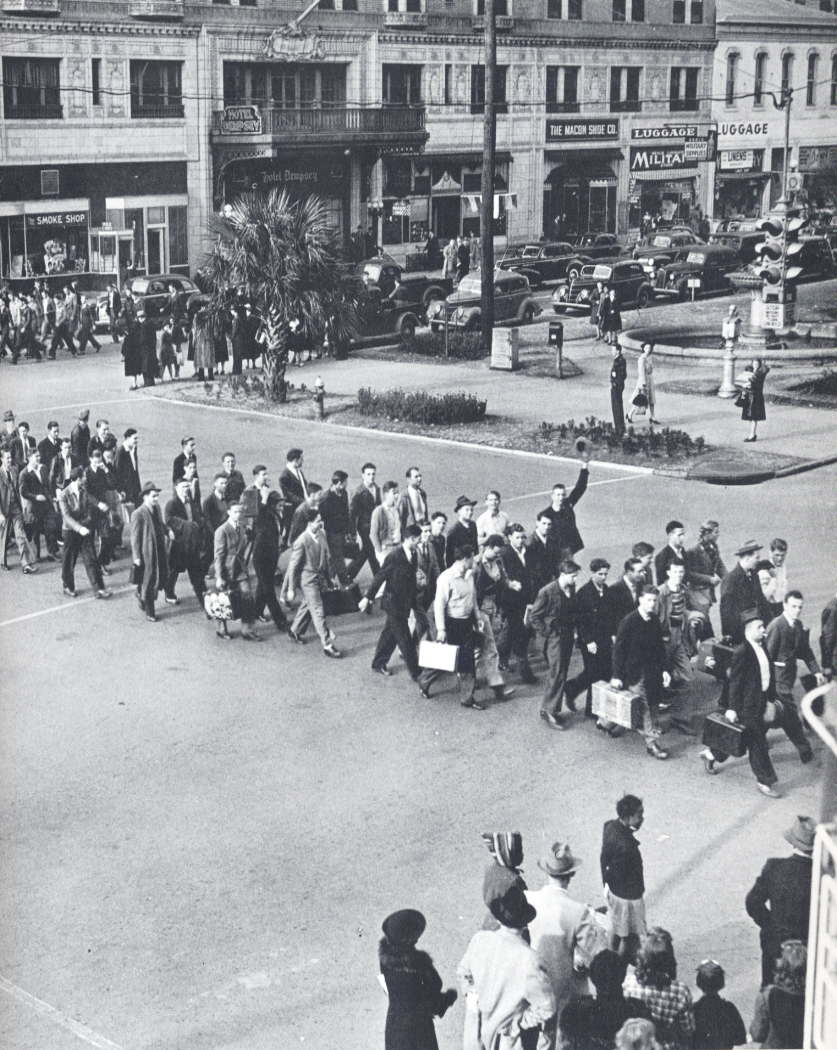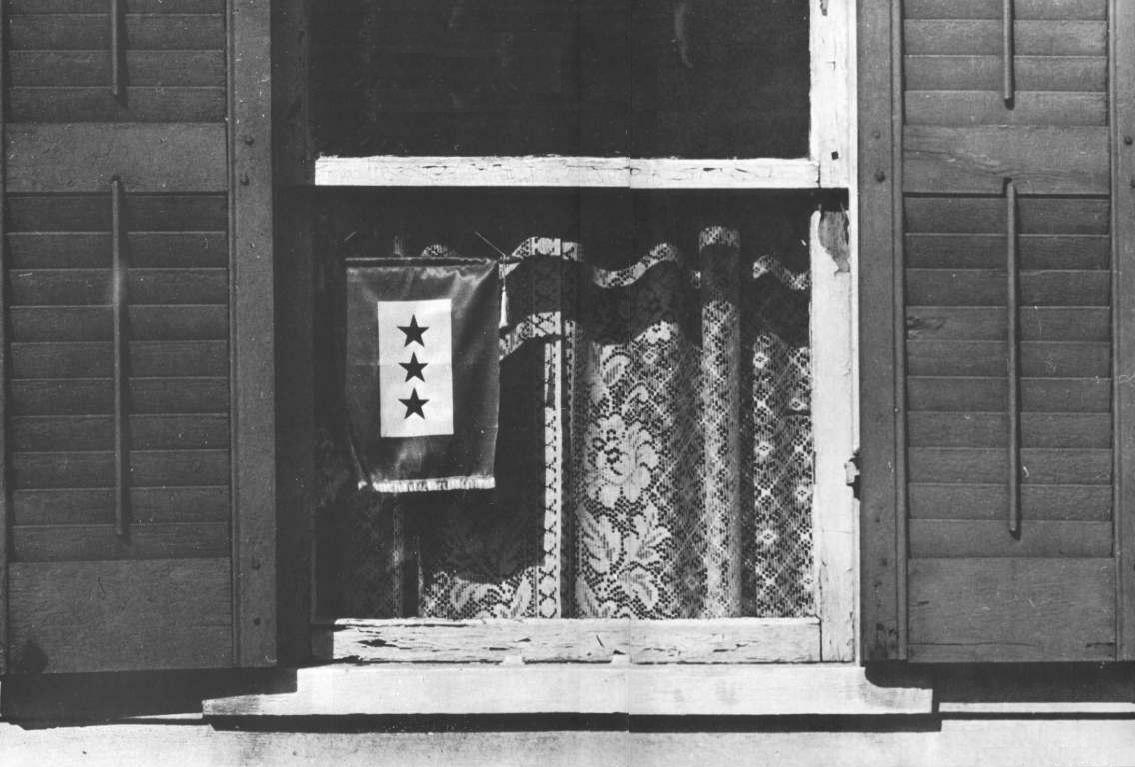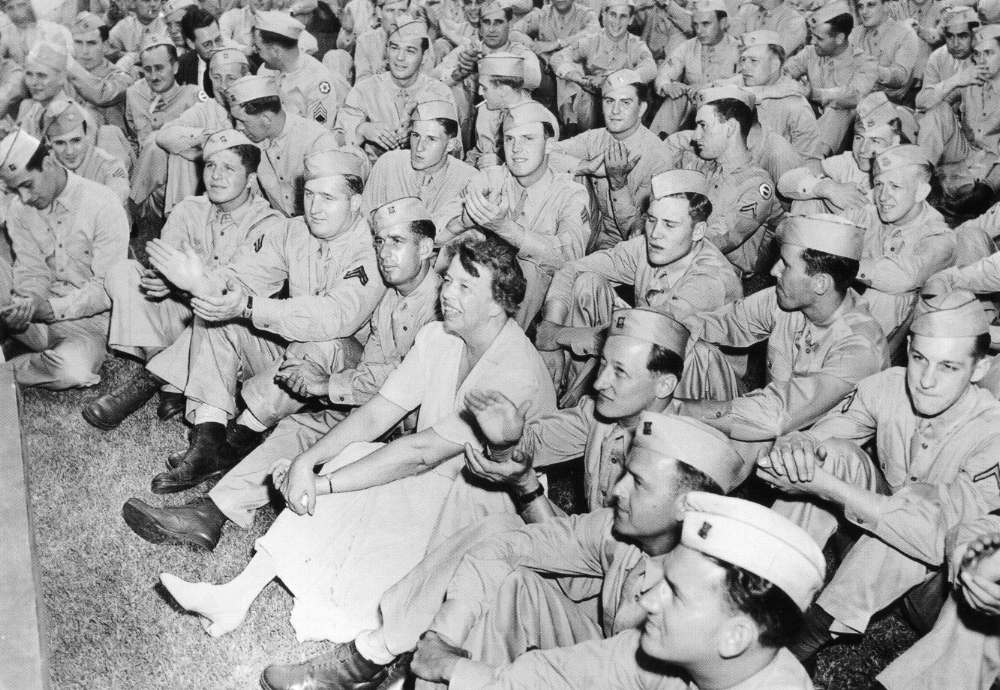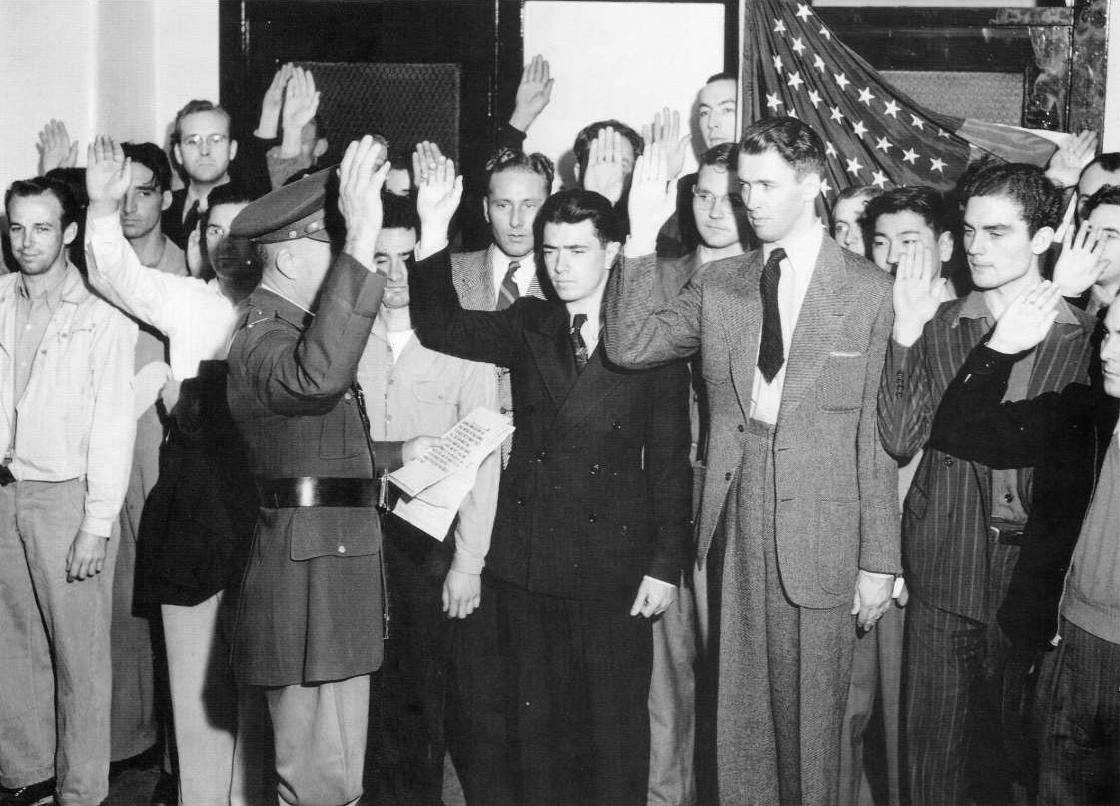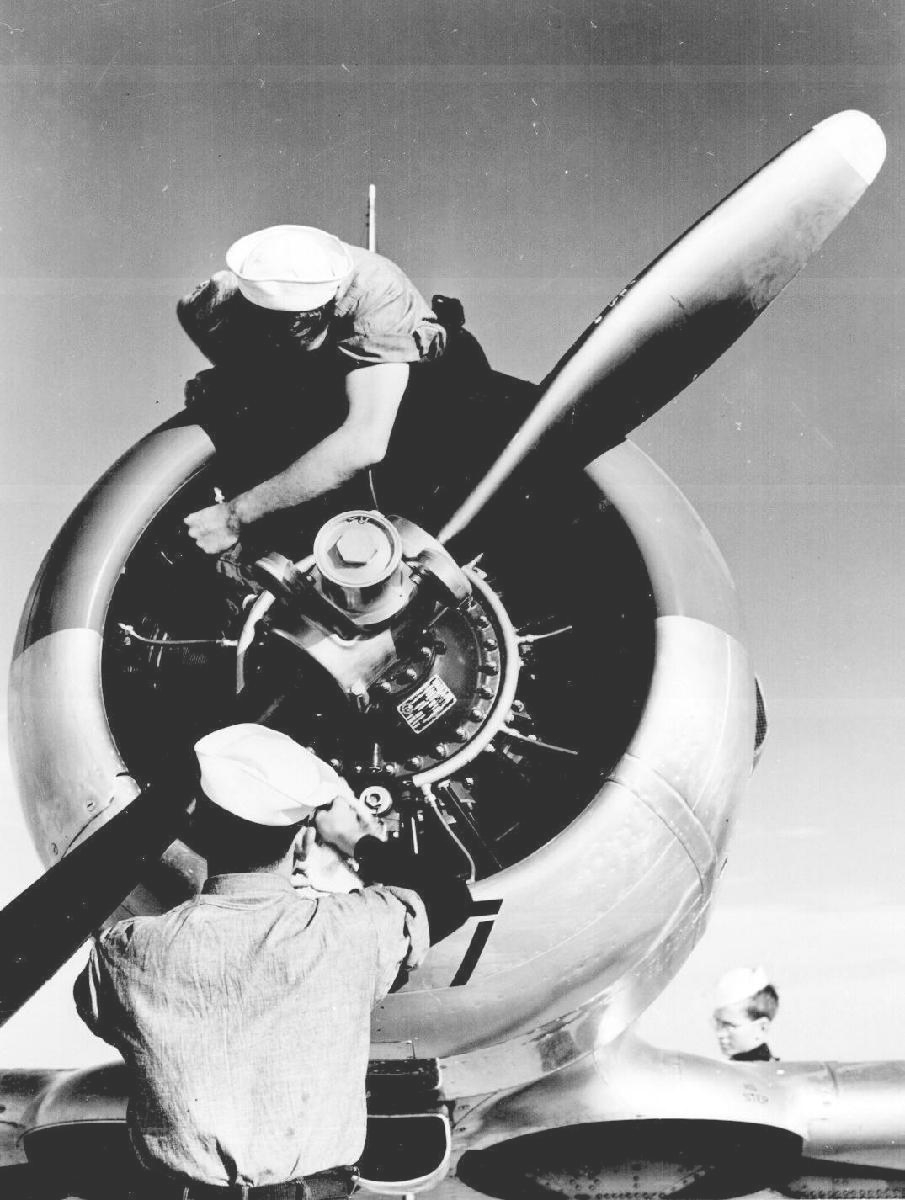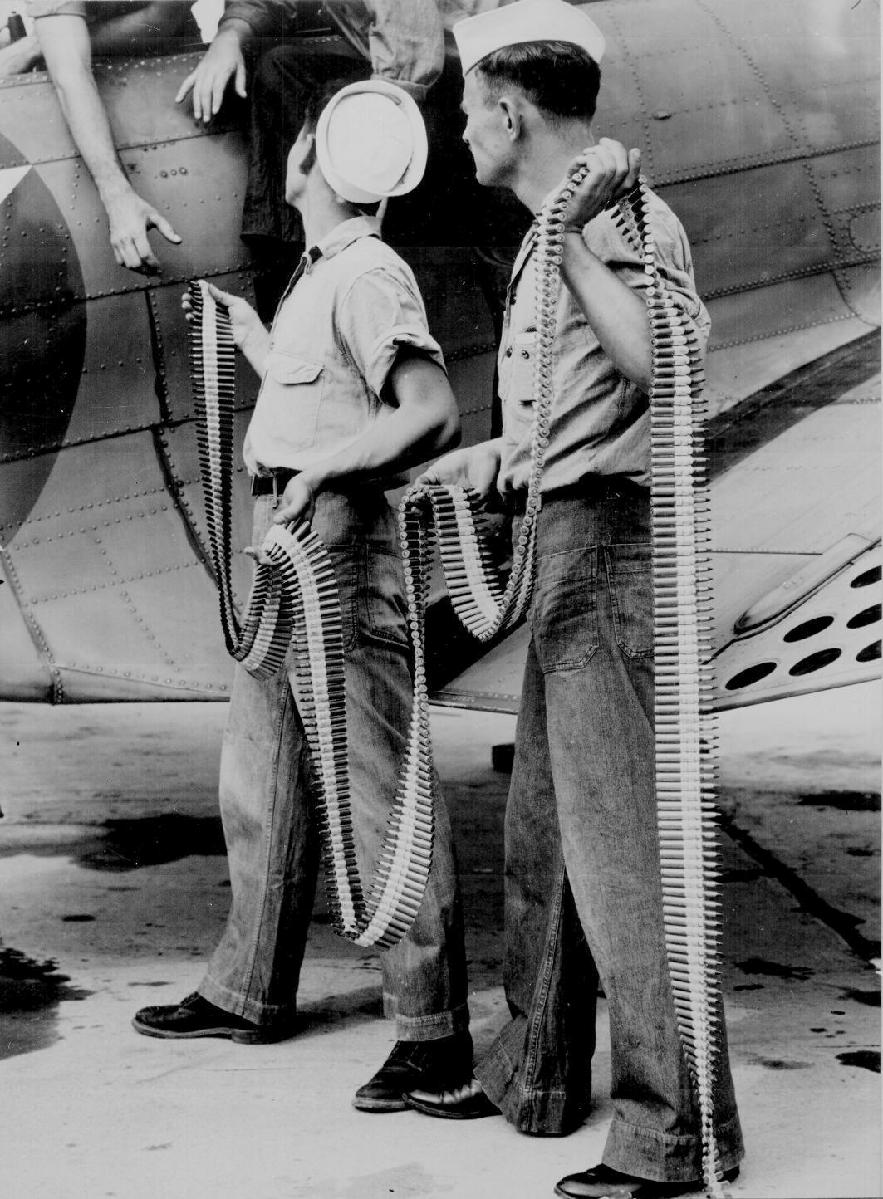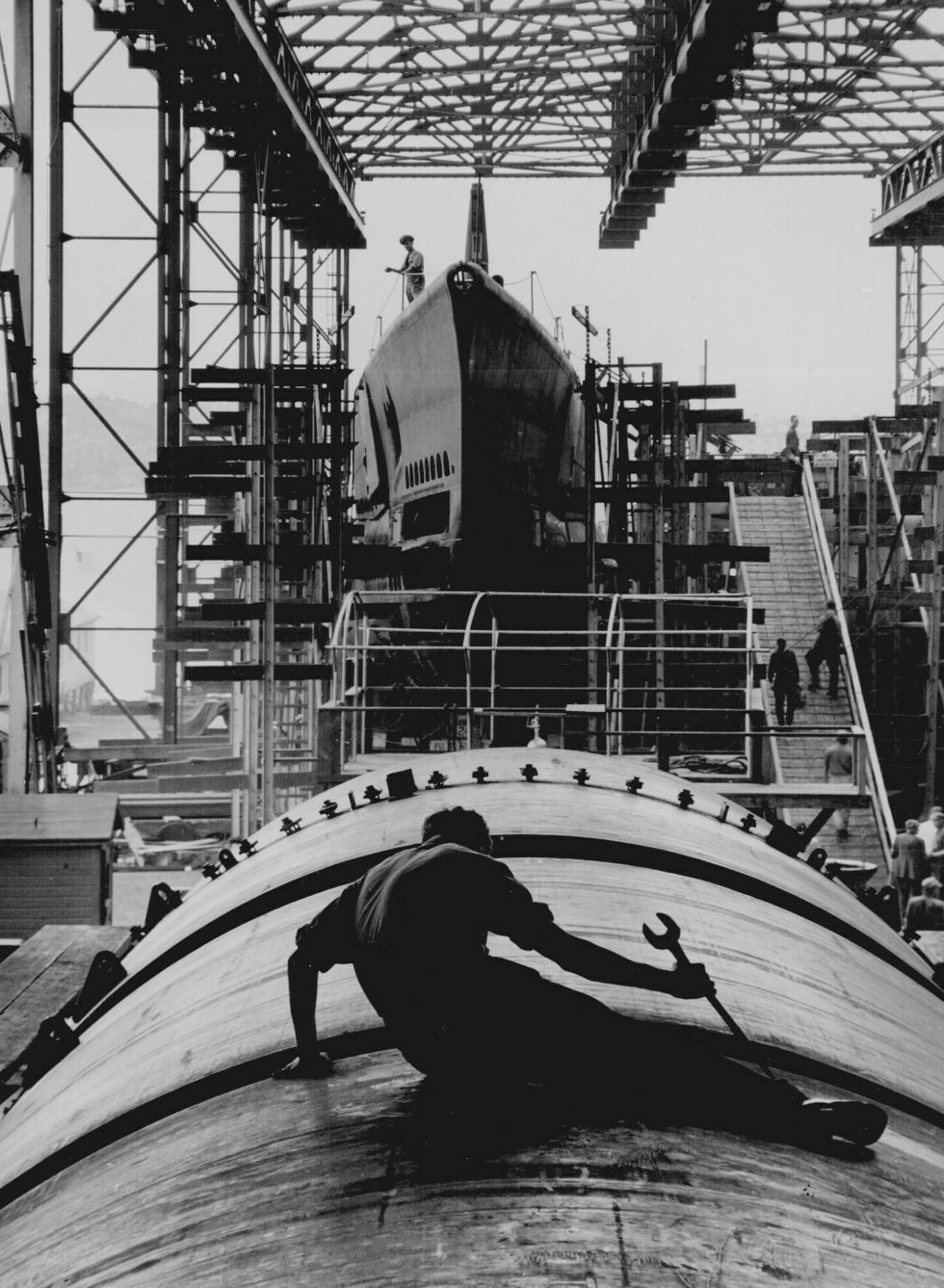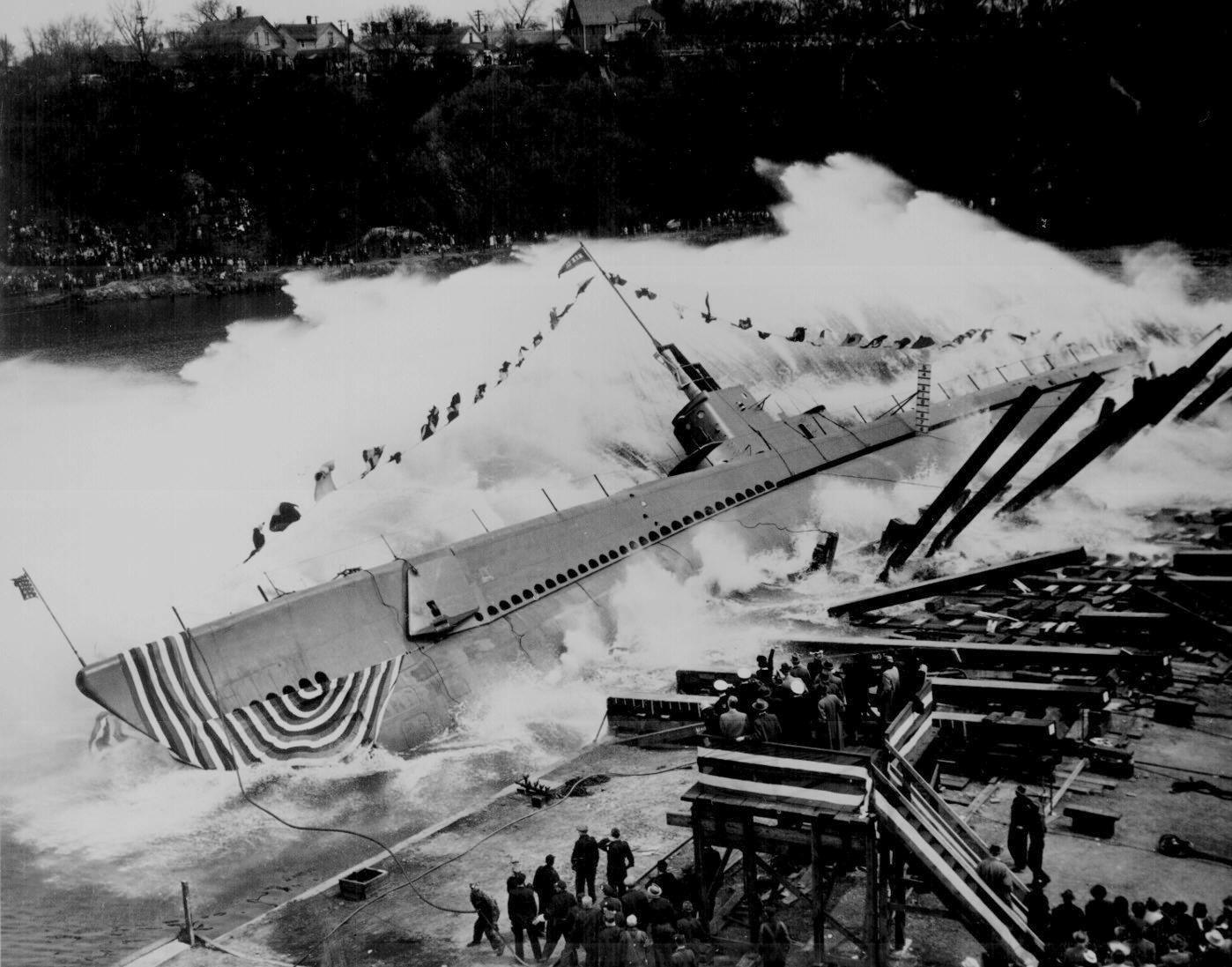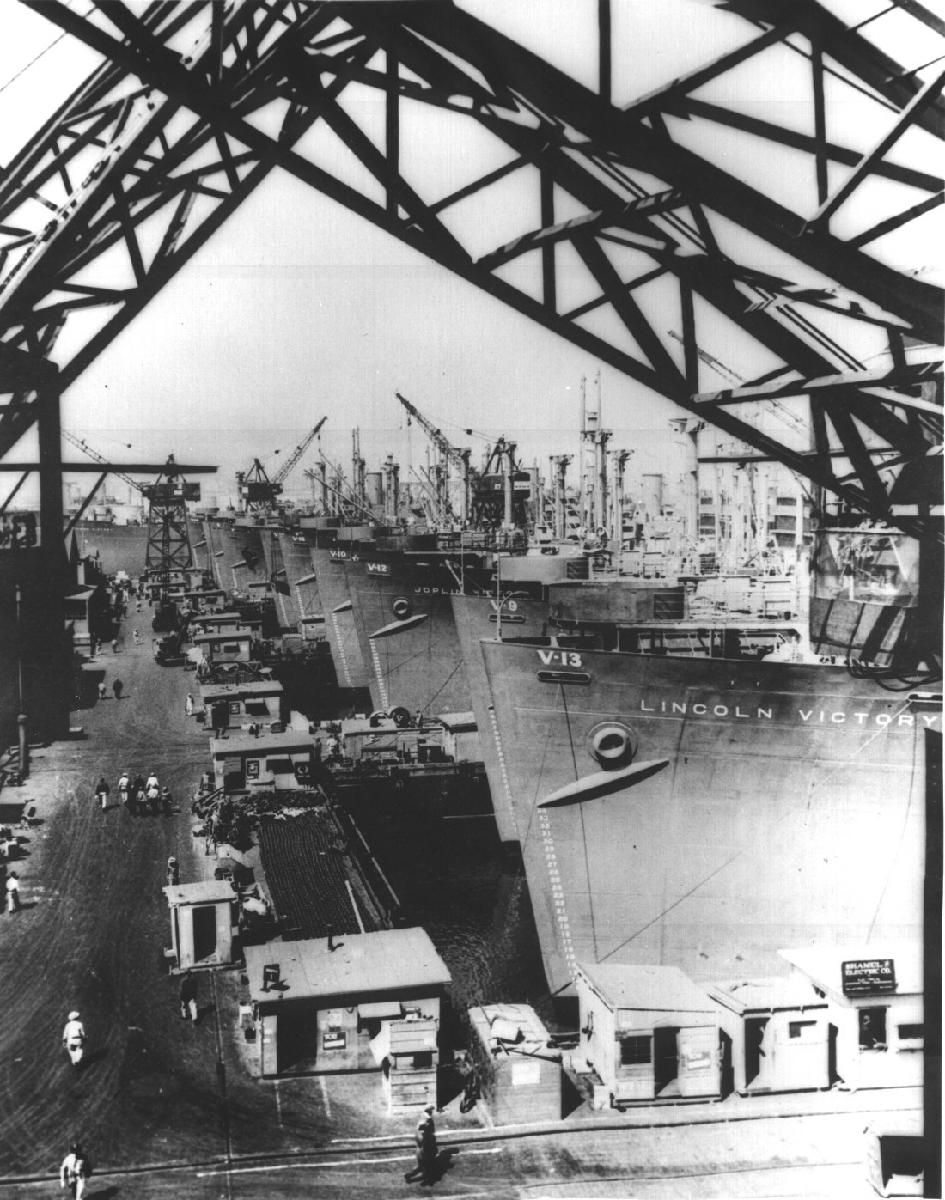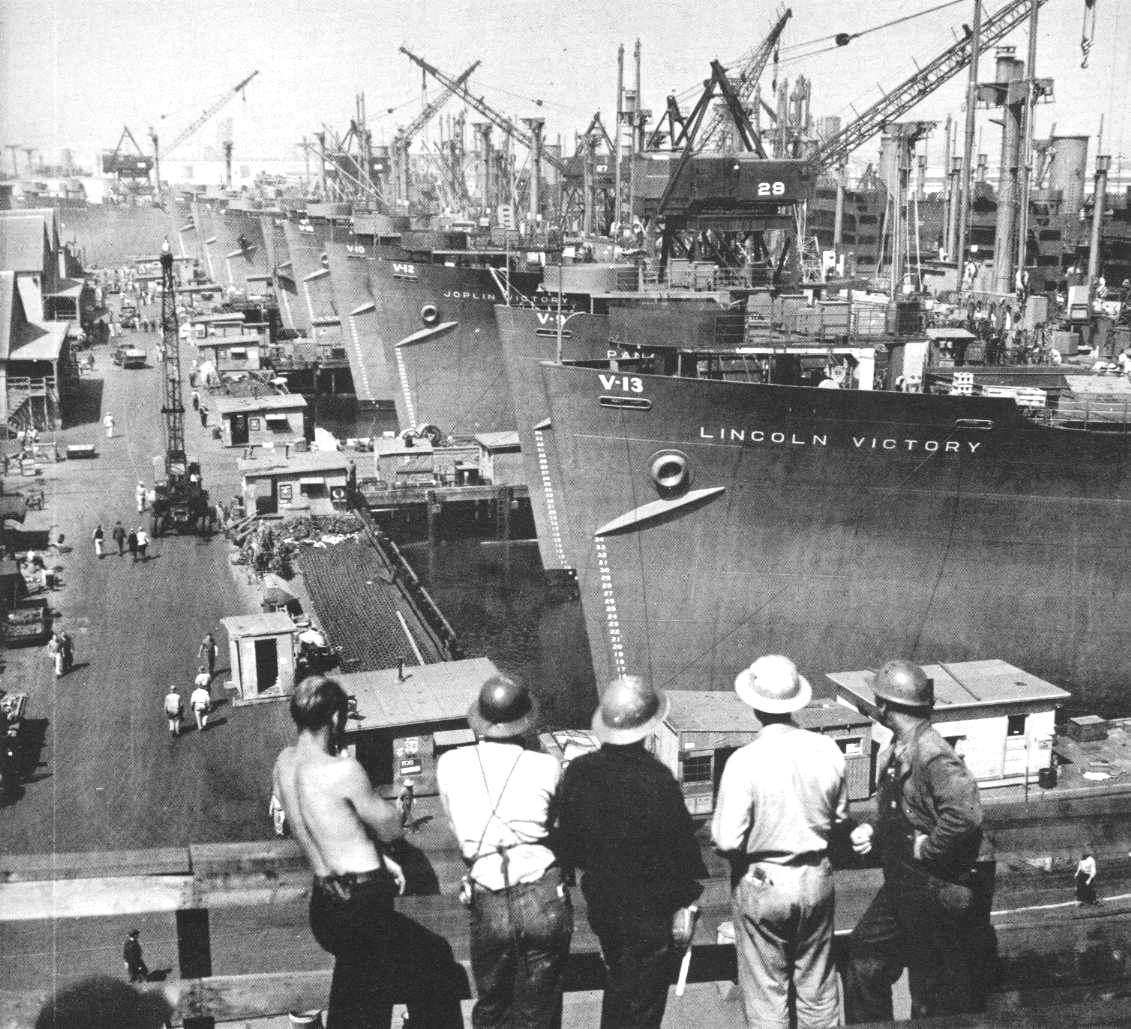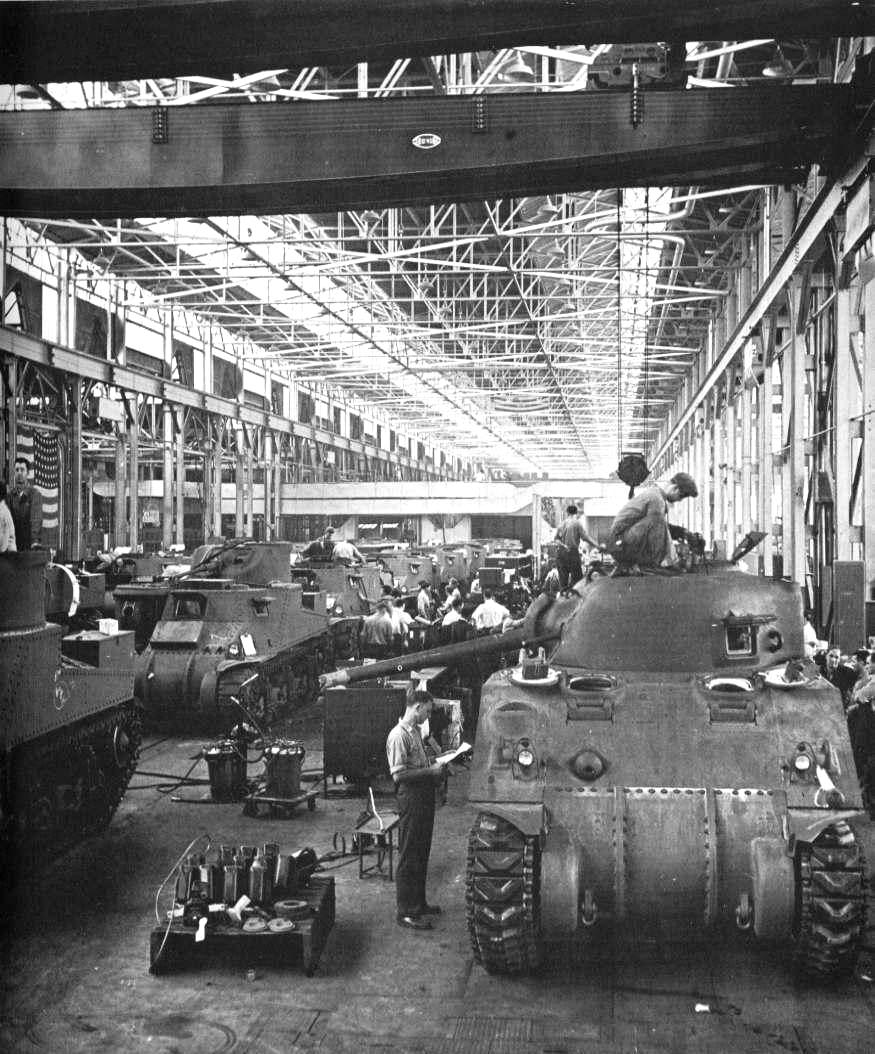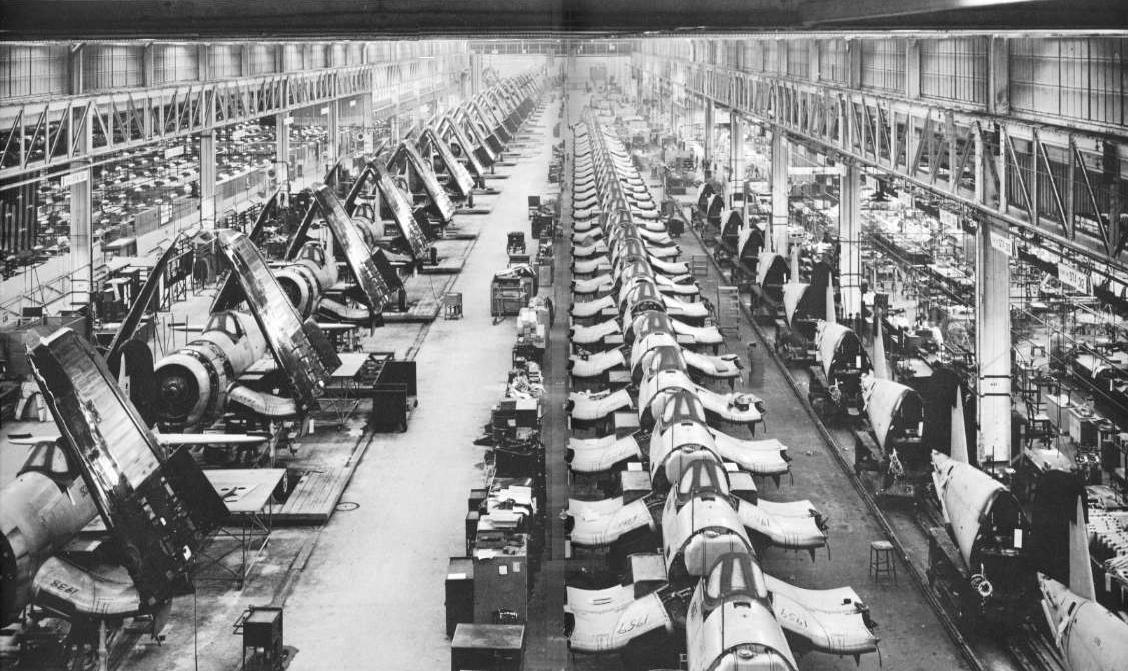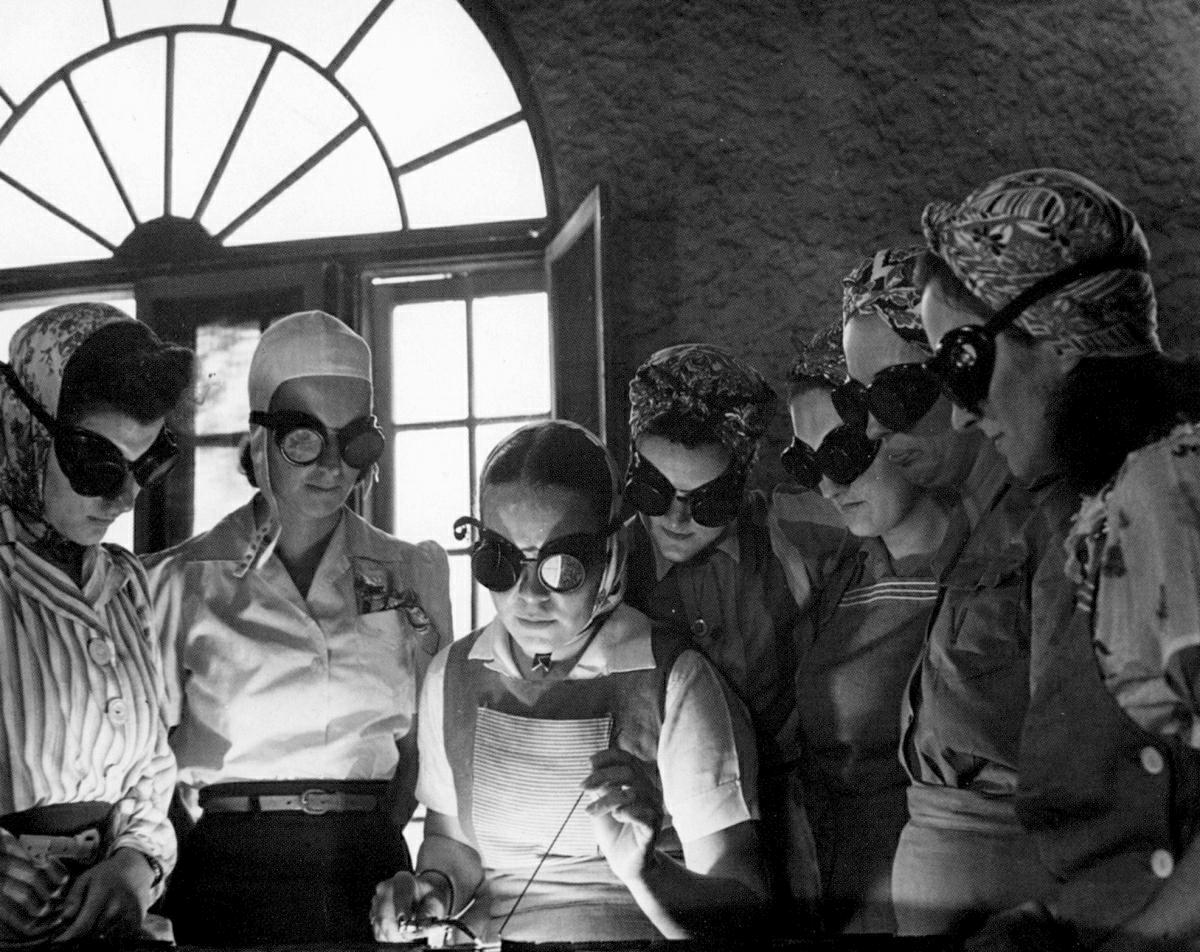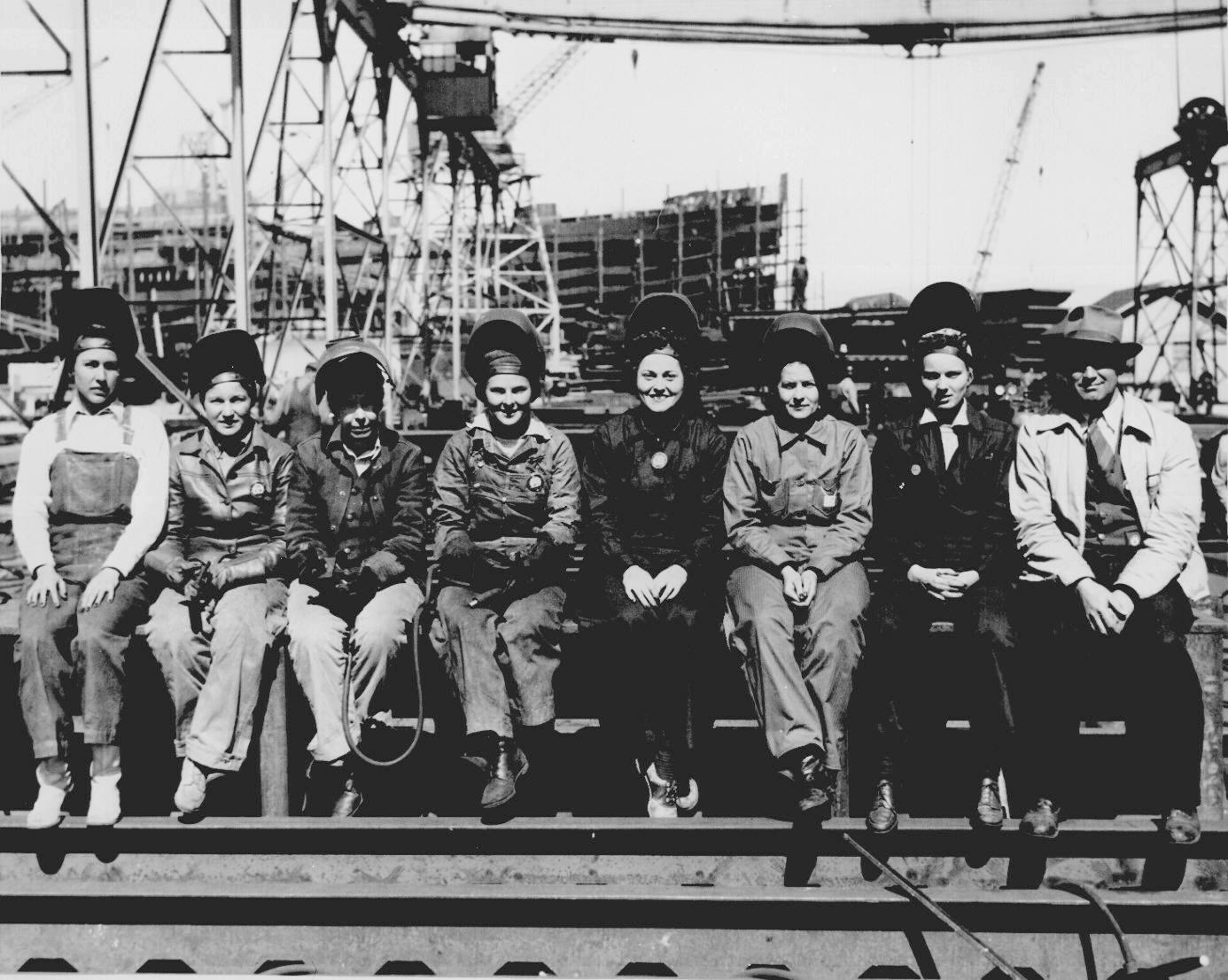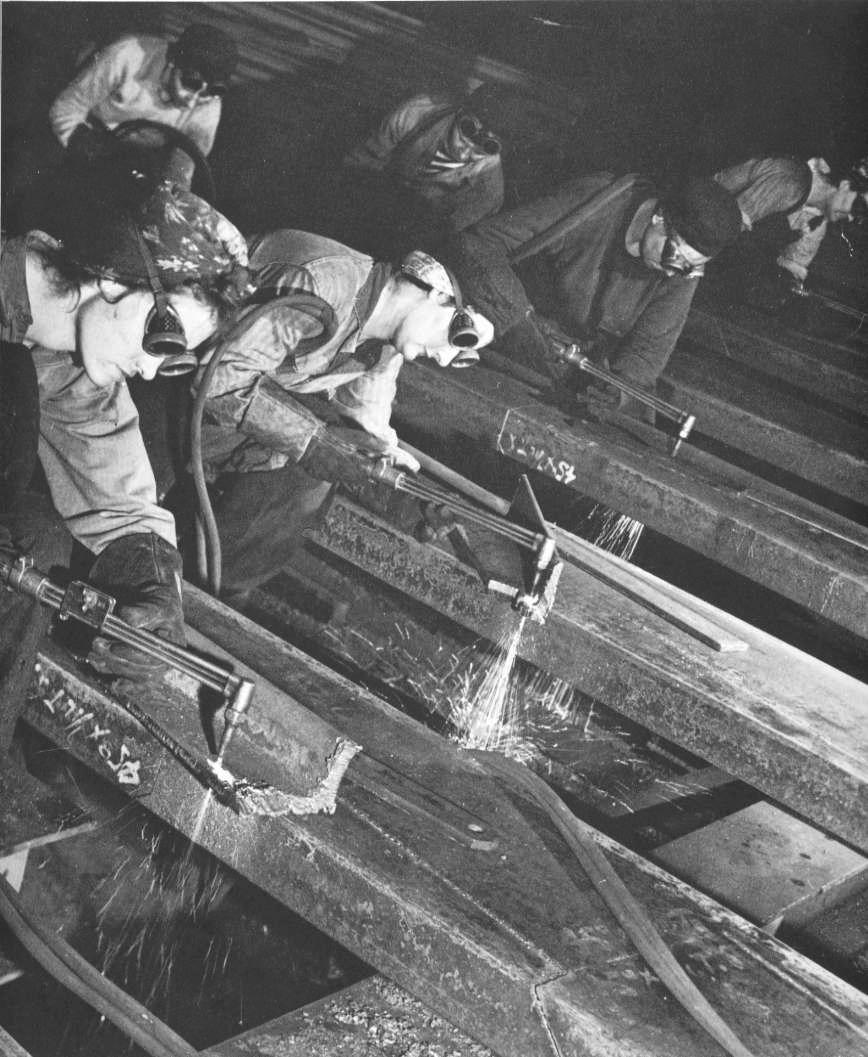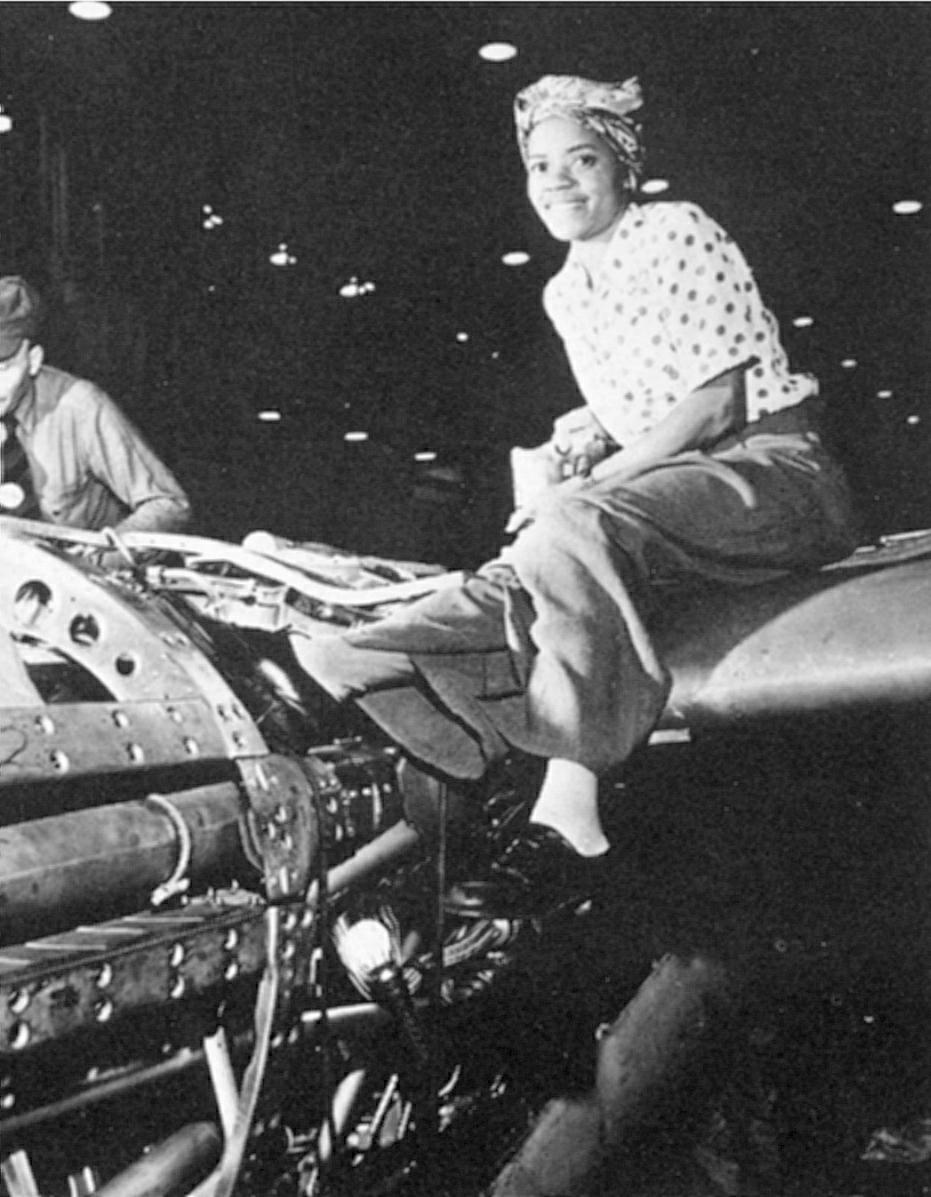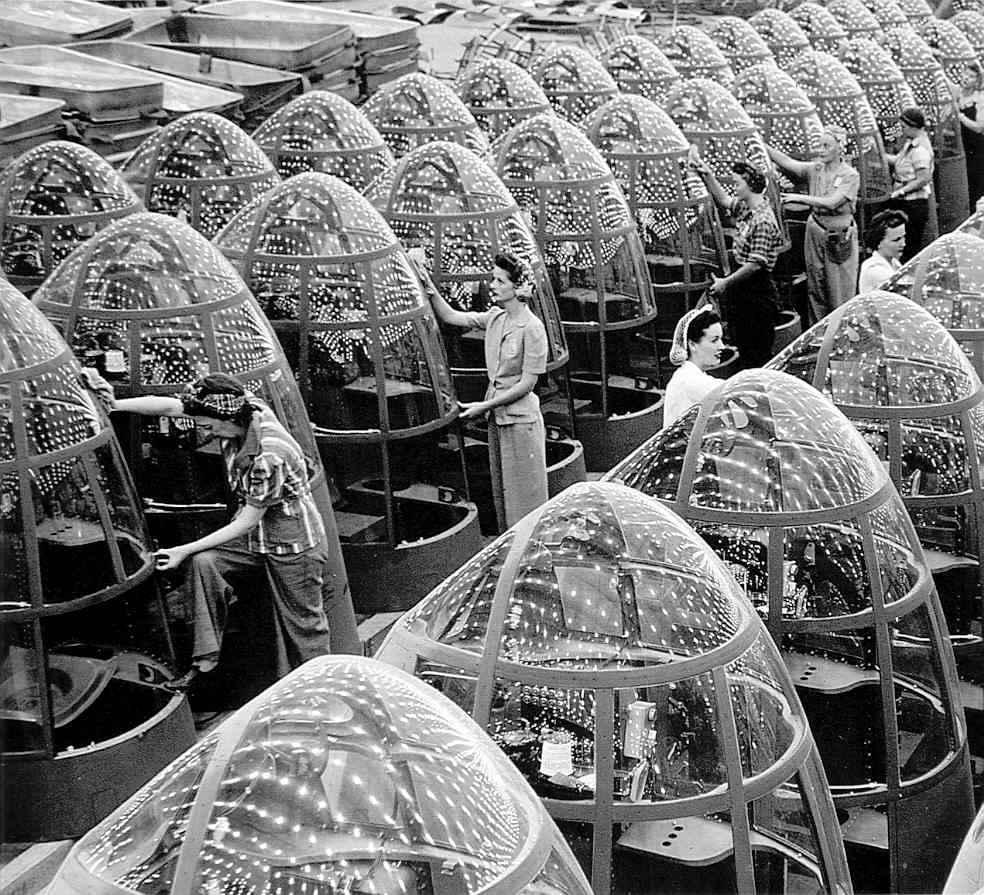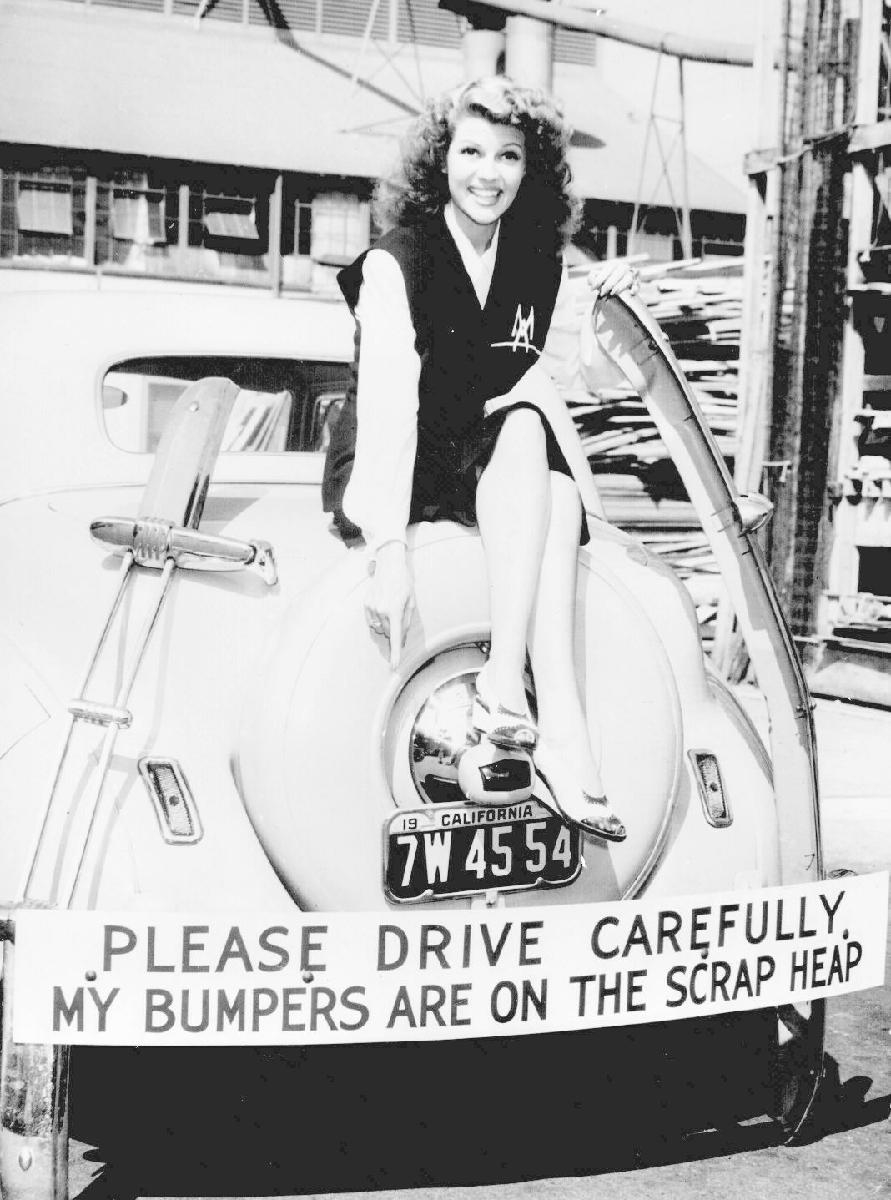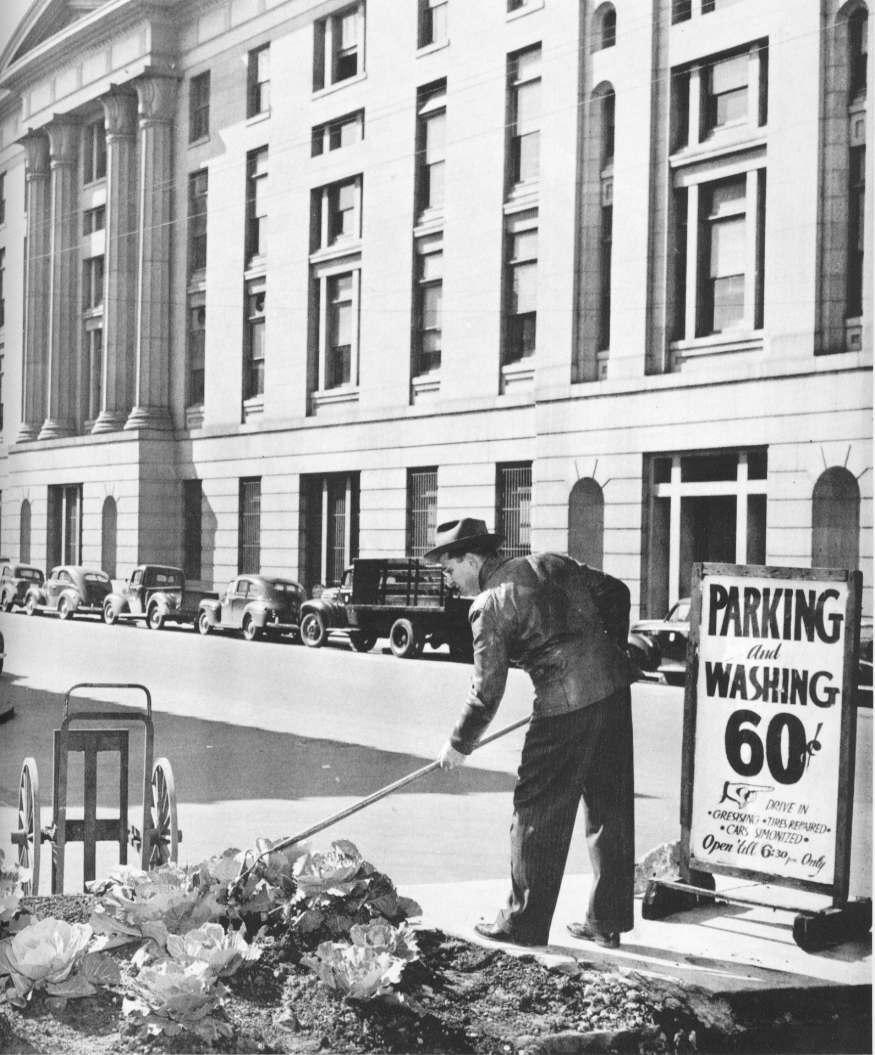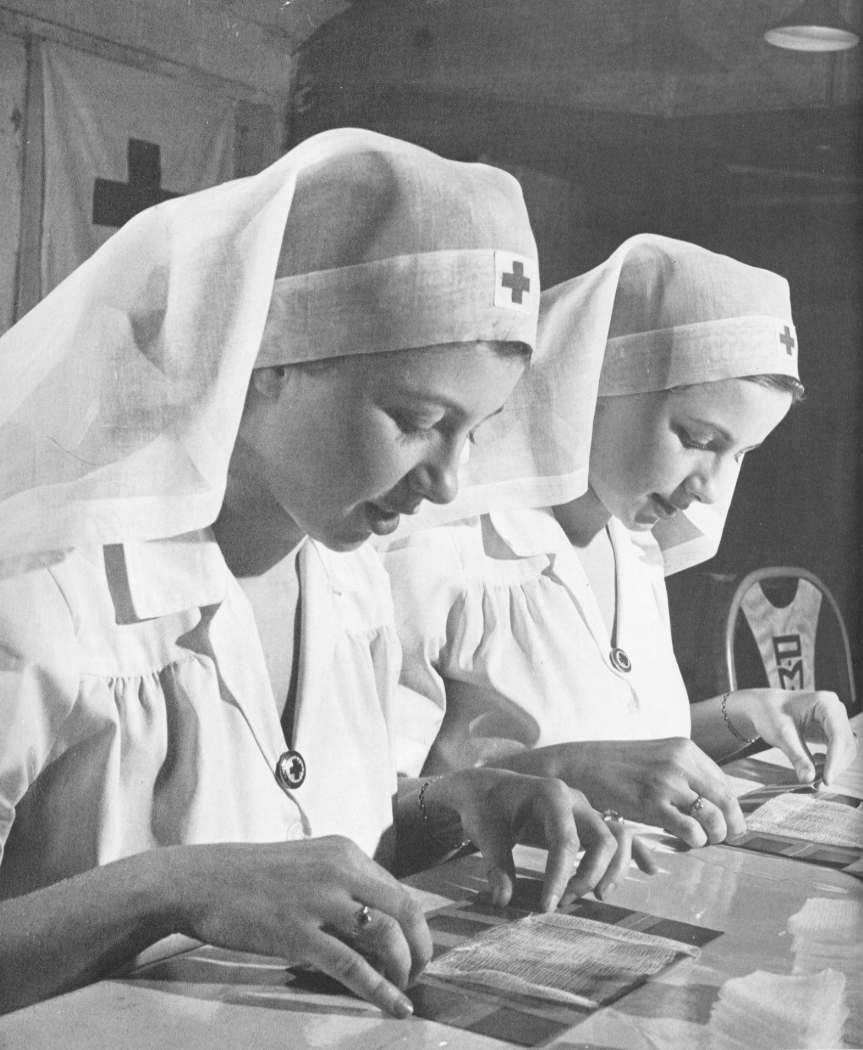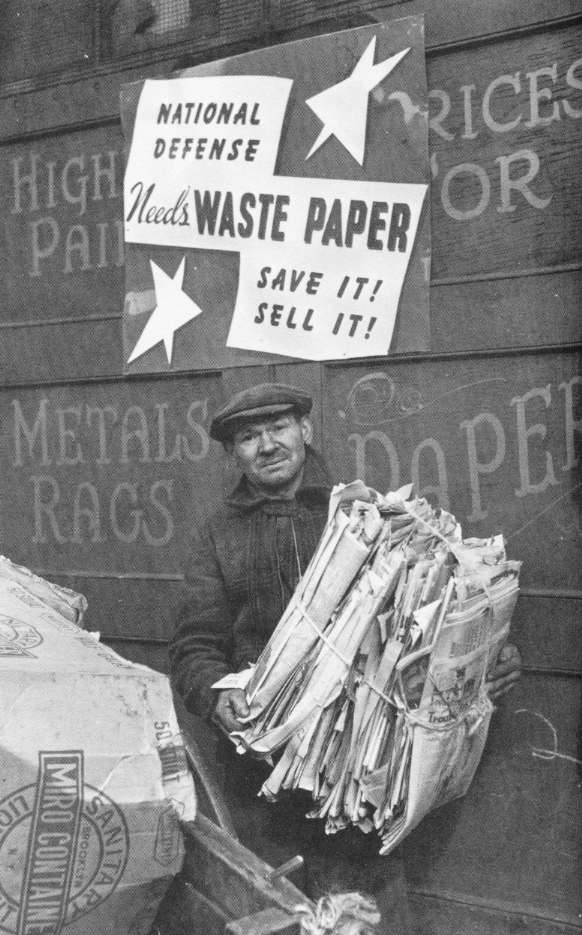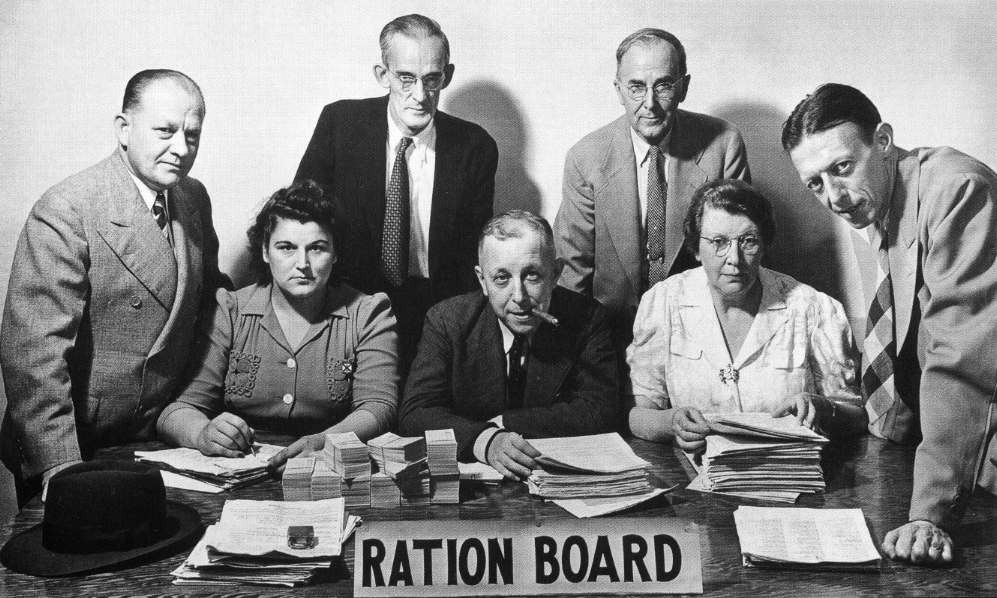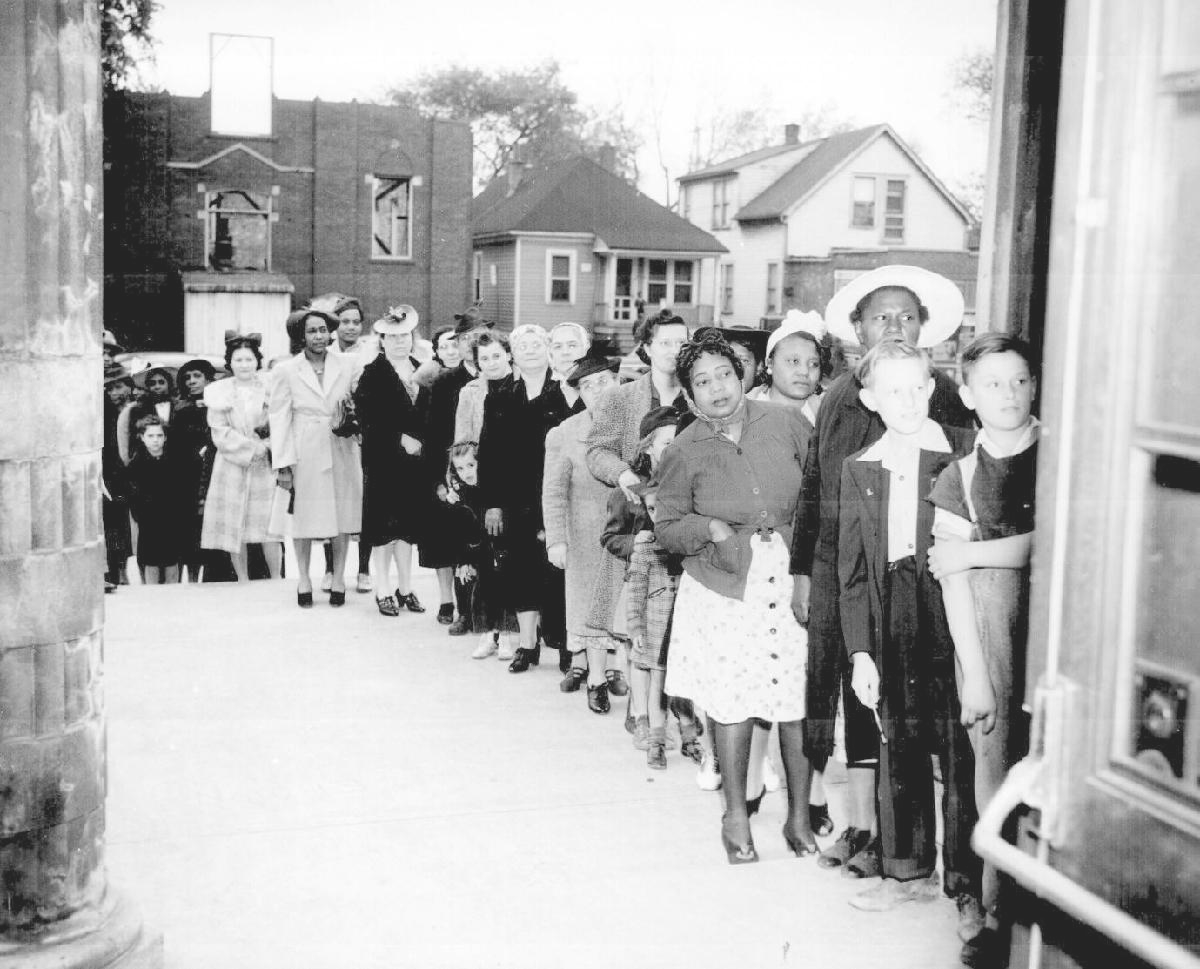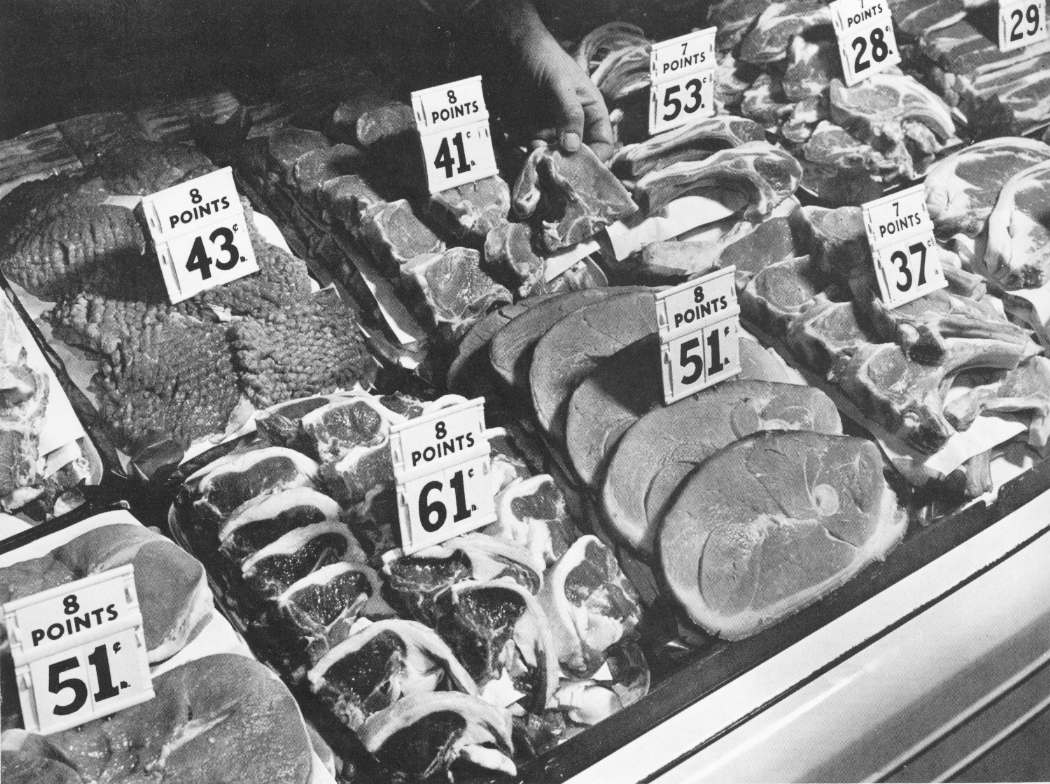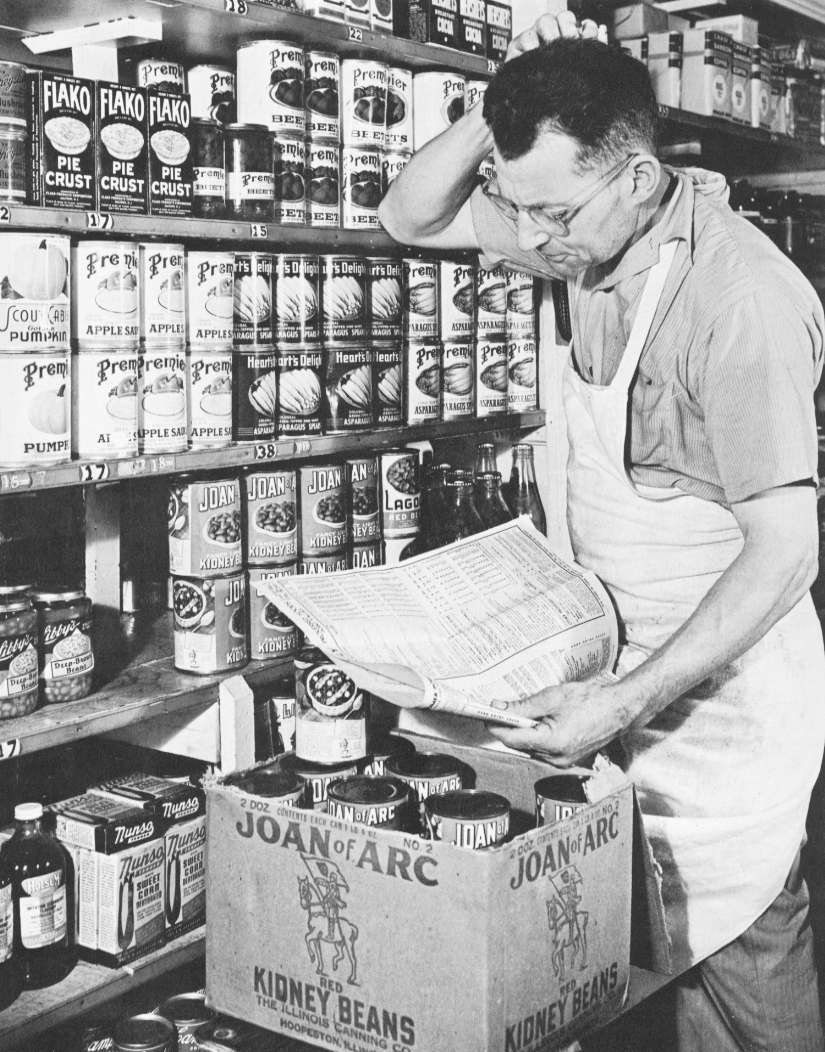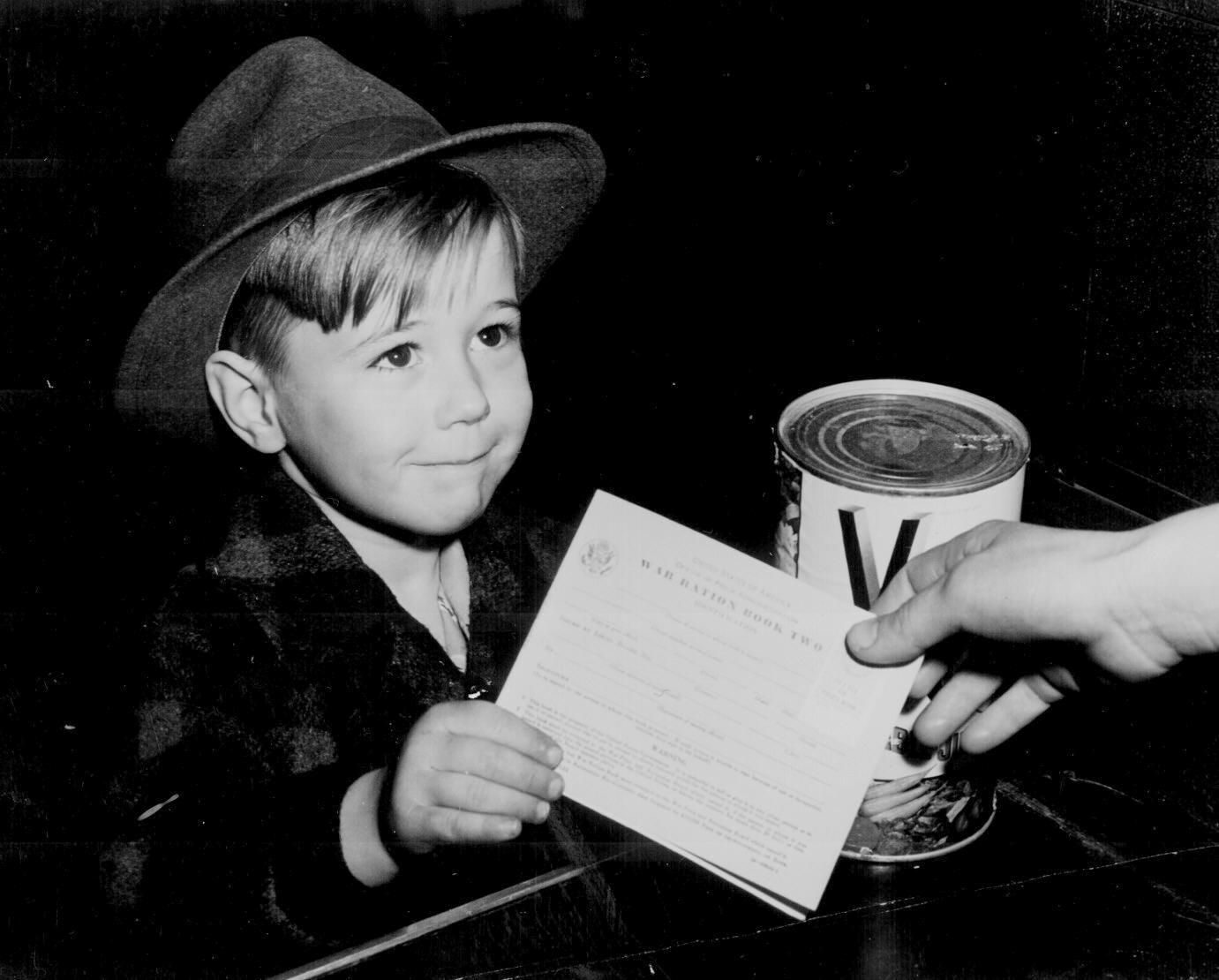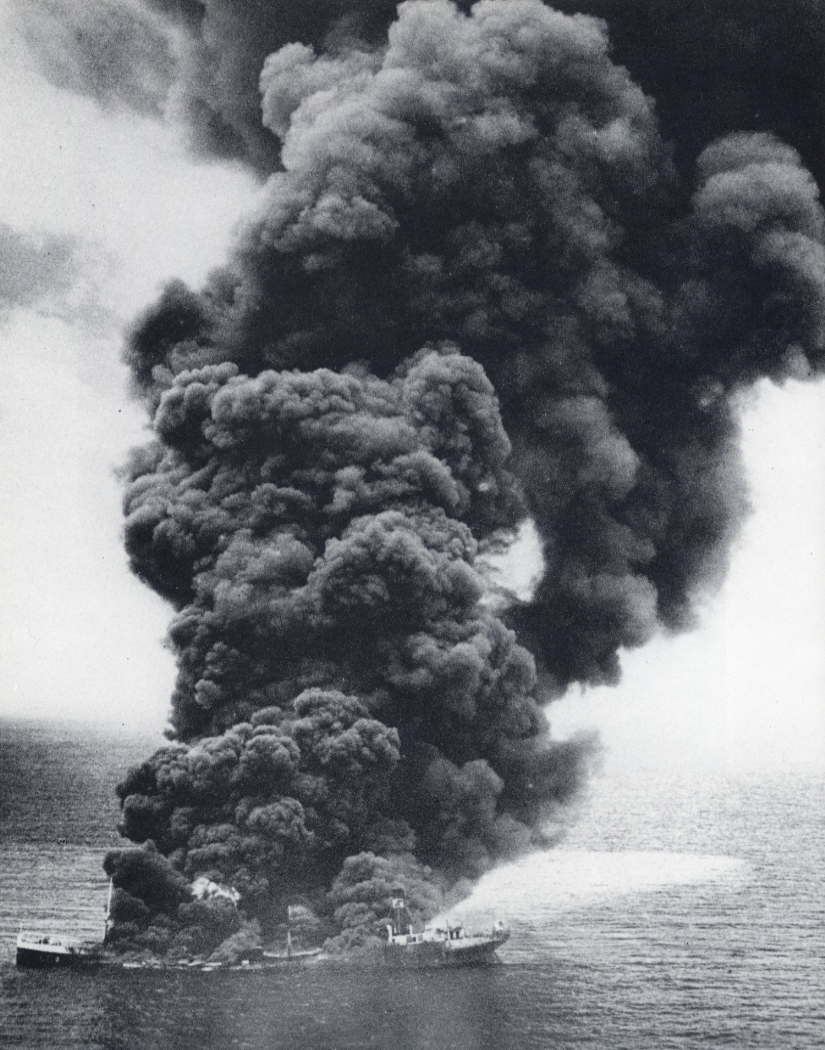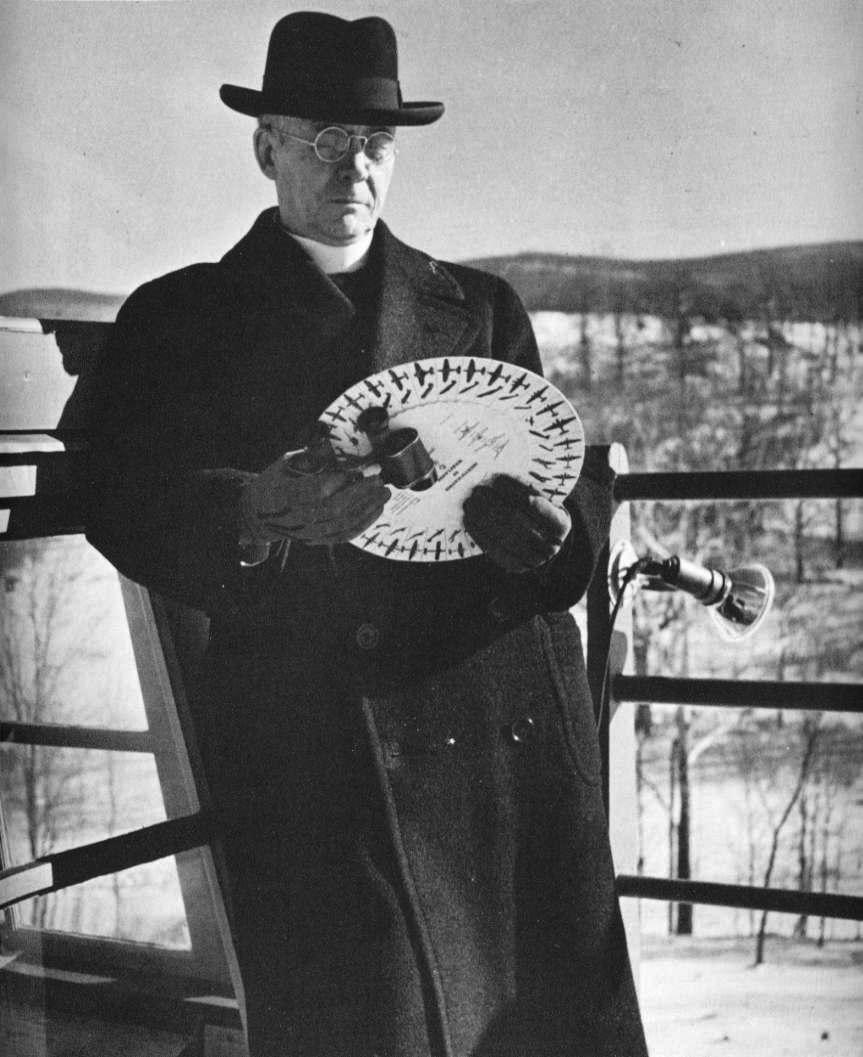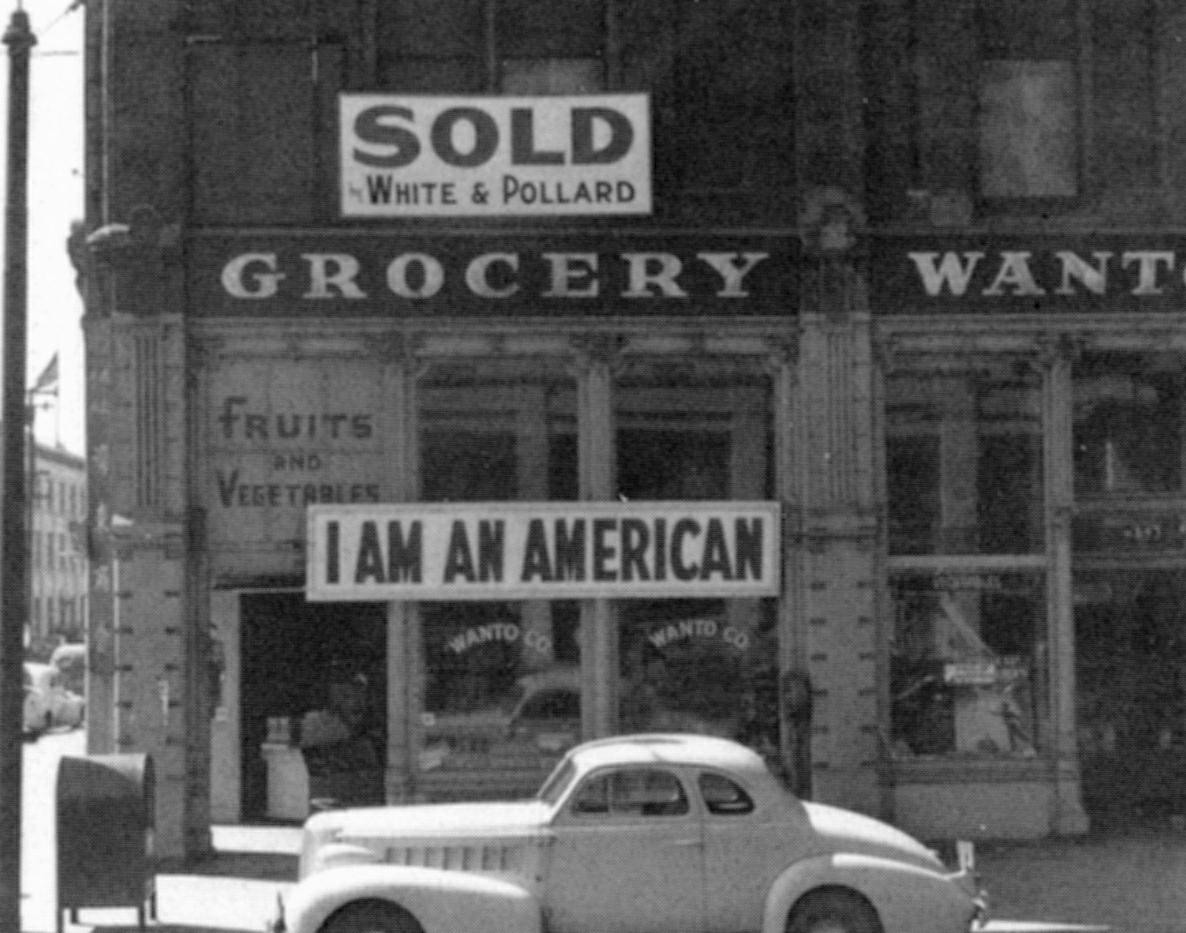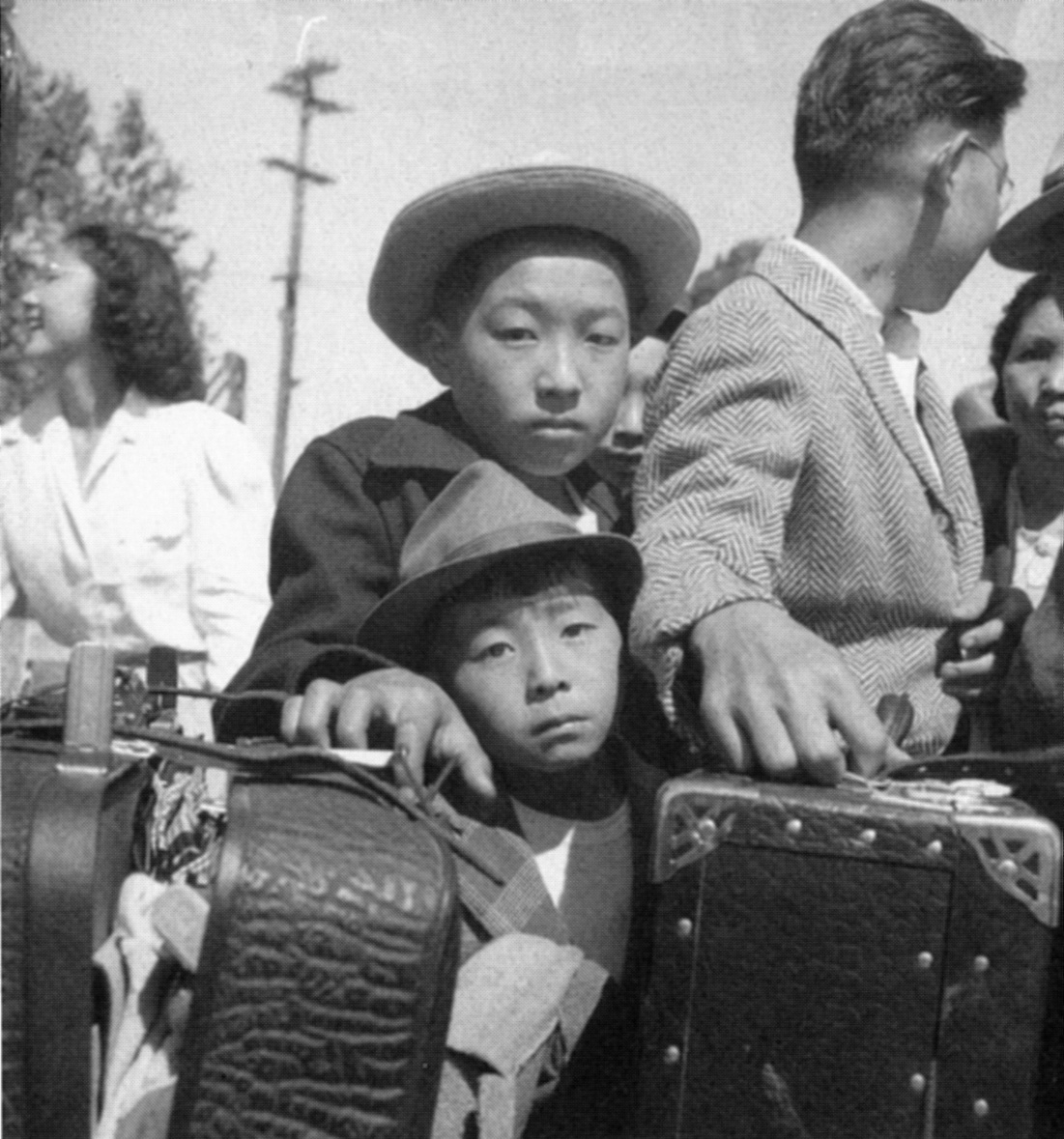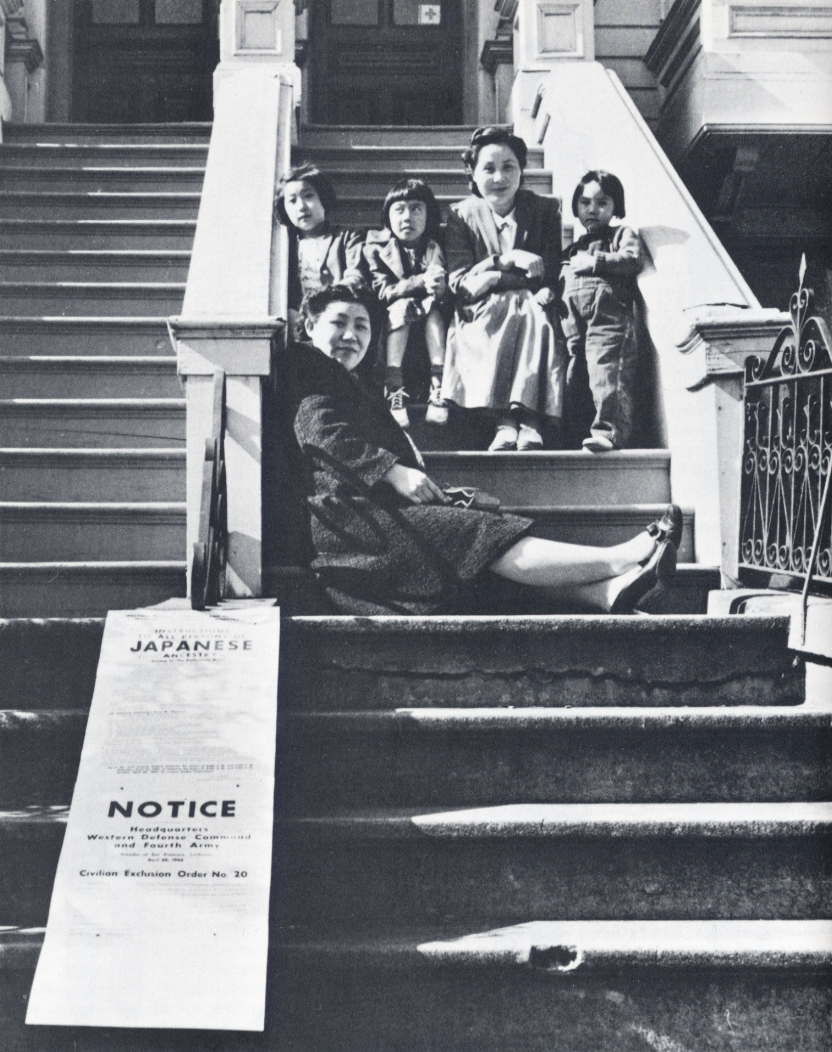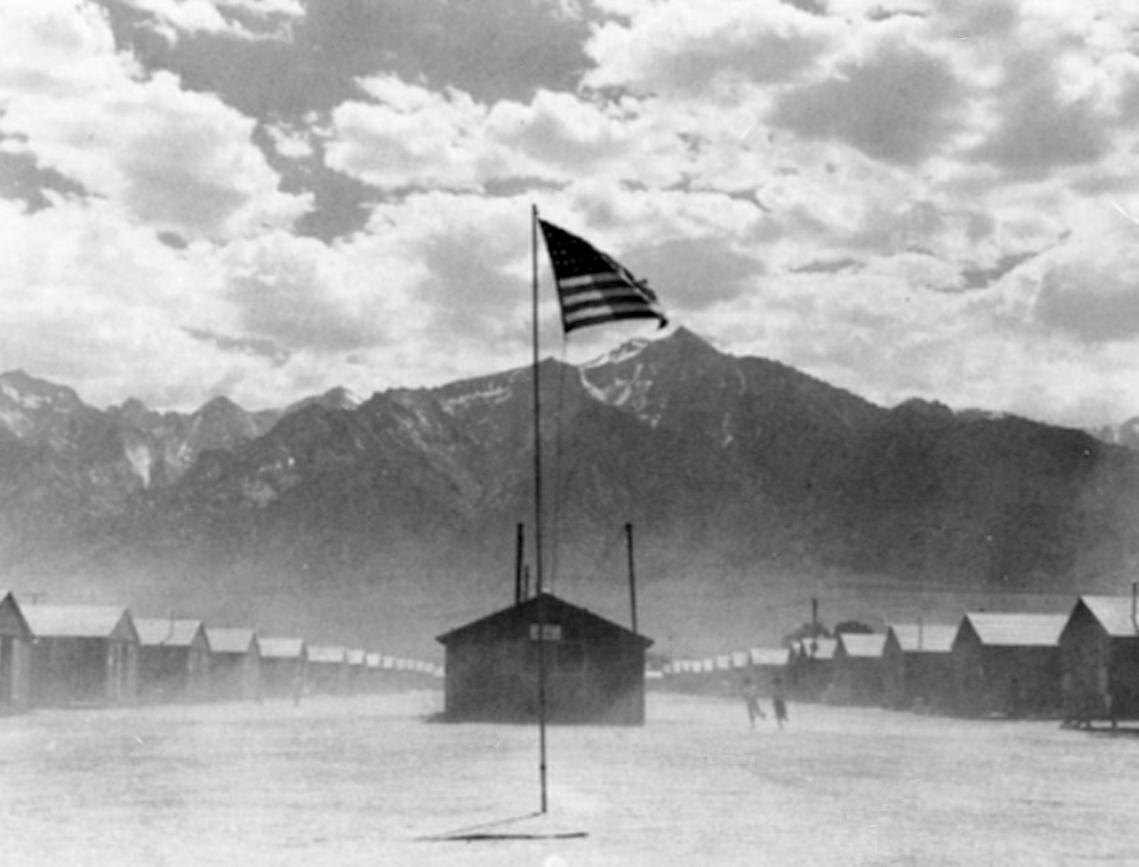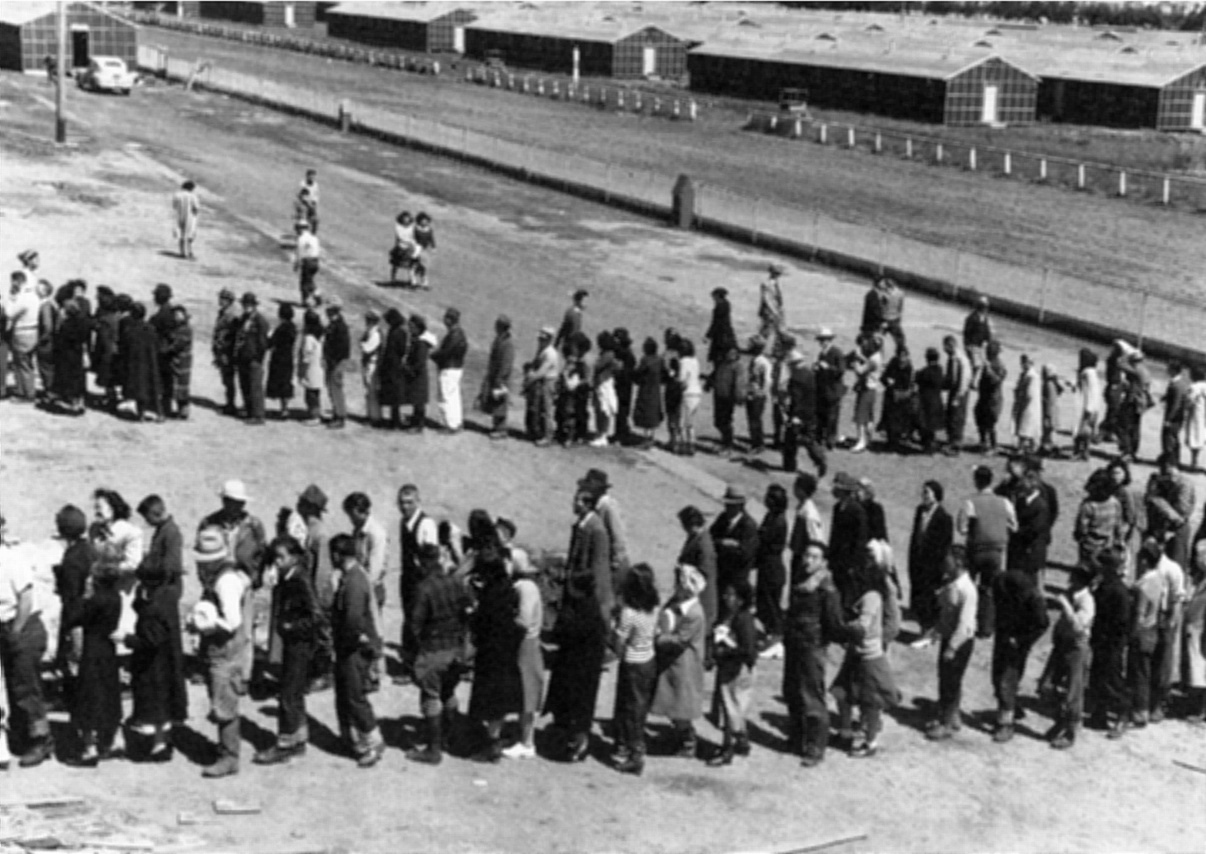16. WORLD WAR – ROUND TWO


THE AMERICAN HOME FRONT
 Building an Army from scratch
Building an Army from scratch
 Cranking up the industrial war machine
Cranking up the industrial war machine
 Volunteers pitching in to help win the
Volunteers pitching in to help win the
war
 Rationing helps redirect the nation's
Rationing helps redirect the nation's
wealth toward the war
 Occasionally the war comes all the way
Occasionally the war comes all the way
up to our doorstep
 America fears a Japanese "fifth column"
America fears a Japanese "fifth column"
in America
BUILDING
AN ARMY FROM SCRATCH |
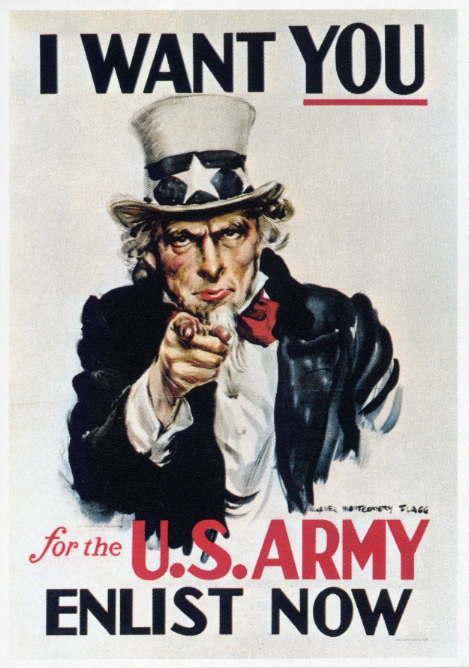
Library of
Congress
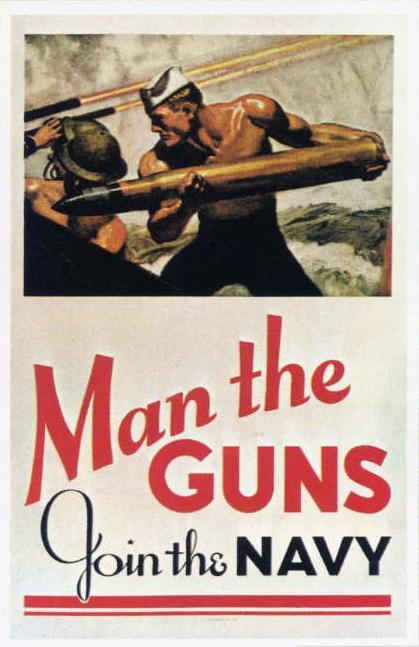
Library of Congress
Library of Congress
(8 months before Pearl Harbor)
|
He had just won the 1940 Oscar for his part in The Philadelphia Story. He was of an old Pennsylvania military family, and had already clocked in over 400 hours of flight time. He would become a highly decorated Army Air Corps bomber pilot and full colonel in rank, having officially led 20 bombing missions over Germany (and others unofficially!). He would eventually retire from the Air Force Reserves in 1968 as a Major General.
|
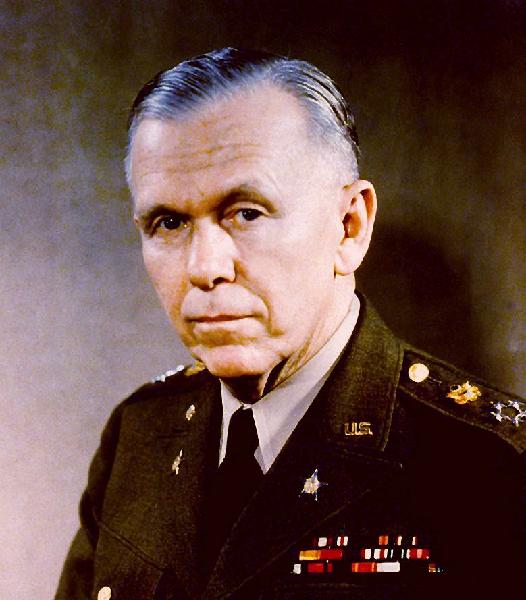
Official U.S. Army
photo
|
Although President Roosevelt was, by the very designation of the American Constitution, Commander-in-Chief of all branches of the US military, the person whom the President depended on most to help walk him through virtually all vital military and diplomatic decisions was the quiet, self-effacing American general, George C. Marshall. In a time of prima donna generals in love with their egos (for instance, American Generals Patton and MacArthur and English General Montgomery) Marshall quietly worked in Washington behind the scenes, coordinating the war effort between the White House and Congress ... and somehow keeping the egotistical generals working together to advance the Allied war effort. He was a man of
few words, but whose every word was trusted by all ... for he was widely recognized as a man of
great integrity. Perhaps
most illustrative of his character was the moment when it was time to
designate a general to lead the massive Allied crossing of the English
channel on D-Day, to begin the liberation of Western Europe ... a
command that would put the name of the general who led the effort on
record forever as one of the greatest generals of all time (and
probably a strong candidate for the U.S. presidency some day).
Everyone knew that this distinct honor belonged to the highly
capable, hard-working General Marshall. Roosevelt knew this too,
but felt that he would be lost in the swirl of Washington and Allied
politics with Marshall in Europe and not at his side. It was up
to Roosevelt to pick the general who would receive this great honor.
But instead he called on Marshall to pick the one who would lead
the D-Day operation. Roosevelt confessed that the honor belonged to
Marshall, but begged him to stay in Washington where the President ...
and the country ... still needed him badly. So Marshall took a piece of
paper, and on it wrote the name of a subordinate General, Dwight D.
Eisenhower, and passed it to the President indicating that Eisenhower
would be the one to lead the assault. Eisenhower was surprised
to receive the honor, but performed well, and stepped into history as
the war's most memorable general ... and on the basis of that fame
eventually became President of the United States. Marshall gave
up that honor ... in order to continue to serve the country rather than
his own personal career. There was a truly great man. The next president, Truman, was well aware of this quality of greatness in Marshall, and asked him to serve as his Secretary of State. Those were critical days when Europeans ... even the former enemy Germans ... needed to be put back on their feet lest the hard-won peace in Europe should slip away again. And America indeed succeeded brilliantly in this effort (1947-1952) ... through the generosity of a great international assistance program that Truman and Marshall put together to rebuild the economies of Western Europe ... a program that came to be known far and wide as "The Marshall Plan."
|

Gen. George C. Marshall -
Time Magazine's "Man of the Year" - 1943
CRANKING
UP THE INDUSTRIAL WAR MACHINE |
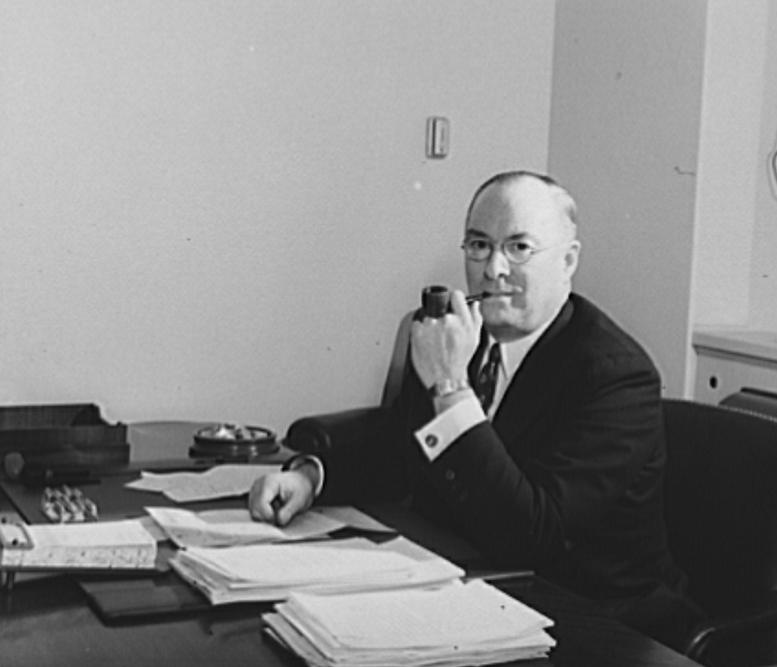
Donald Nelson (of Sears, Roebuck & Co.) headed the War Production Board (1942-1944). The Federal government funded the building of new industrial plants, encouraged industrial producers to work together (and thus had to suspend the anti-trust laws outlawing just such behavior) in order to optimize war production ... much to the annoyance of FDR's New Deal supporters who still considered industrial capitalism to be a vile philosophy!
National Archives
80-G-475186
National Archives
80-G-472528
Lt. Comdr. Charles Fenno Jacobs, August
1943.
National Archives
80-G-468517
National Archives
80-G-68535
they are loaded with supplies for Navy
depots and advance bases in the Pacific." Ca. 1944
National Archives
208-YE-2B-7
to learn war work. Typical are these in the Daytona Beach branch of the Volusia country
vocational
school - April 1942
National Archives
National Archives
86-WWT-85-35
National Archives
Long Beach, California
National Archives
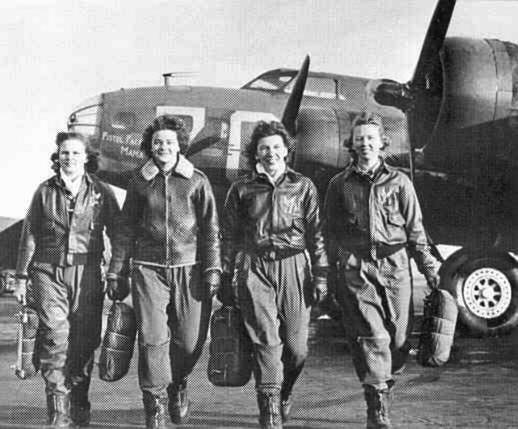
Smithsonian
Institution
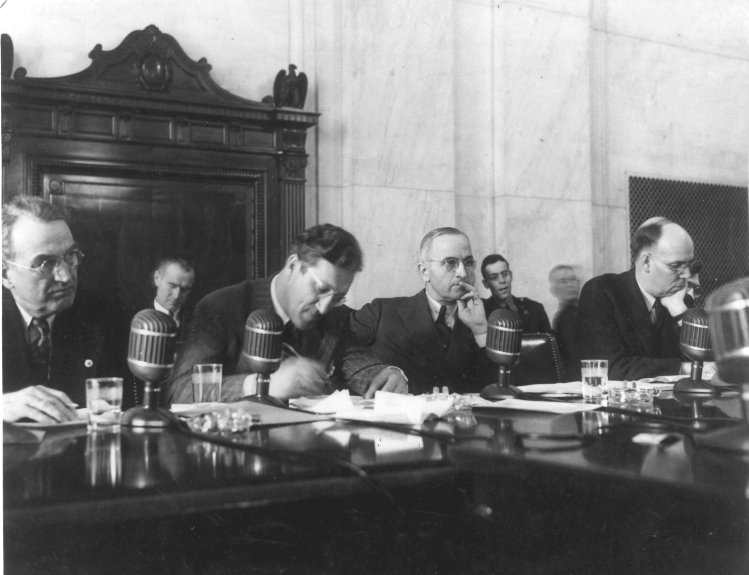
Miller Nichols Library -
University of Missouri - Kansas City
One of the most amazing developments of the industrial ingenuity of American industry was the "Higgins boat," the plywood landing craft (20,000 built) that would be invaluable in getting troops and supplies from the ships to the beach
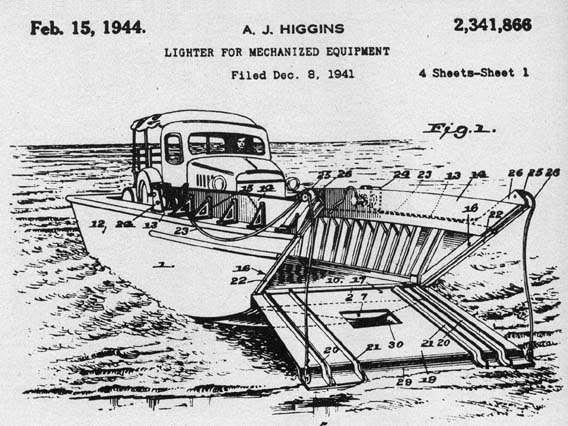
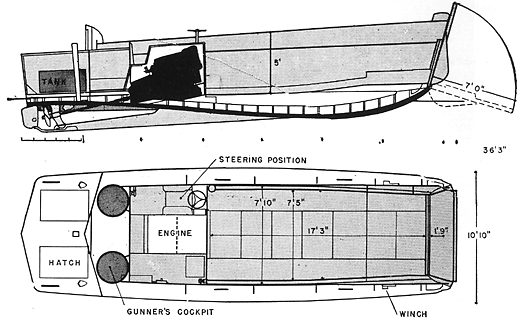
A.J.
(Andrew Jackson) Higgins
had to fight the bureaucratic resistance of the Bureau of Ships
which refused to accept his design,favoring their own version
which proved unstable and
prone to sinking. Thanks to the Truman
Committee, Higgins was finally given
the go-ahead
to build the boats that Eisenhower would come to credit as a saving piece of the entire
war effort,
without which the war would have been delayed ... if not even
unwinable.
VOLUNTEERS
PITCHING IN TO HELP WIN THE WAR |
National Archives
208-PU-91B-5
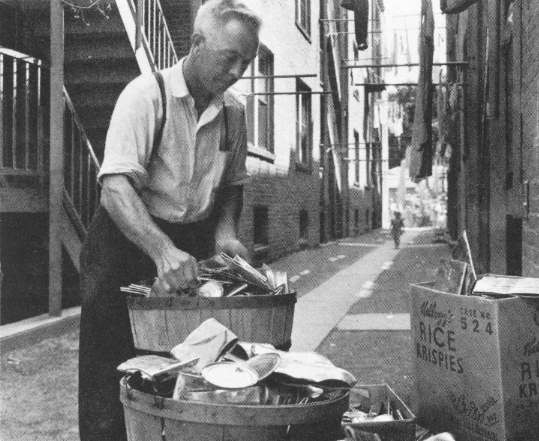
Library of Congress
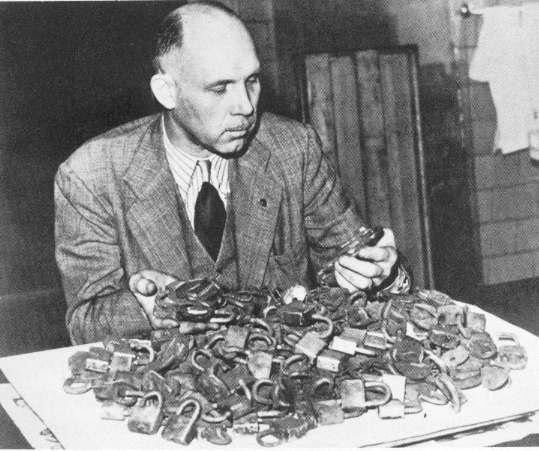
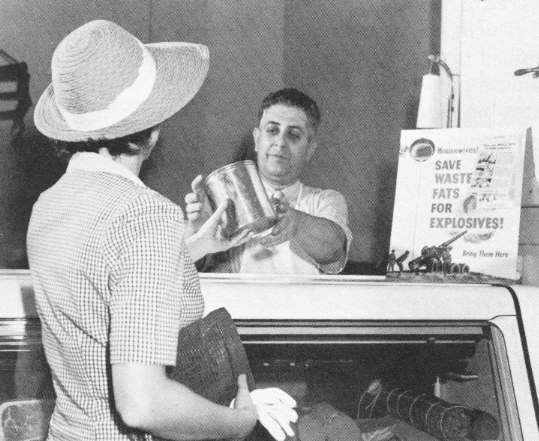
Library of Congress
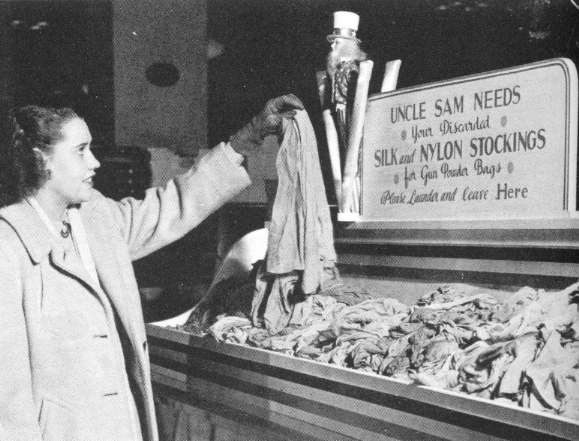
Library of Congress
Library of Congress
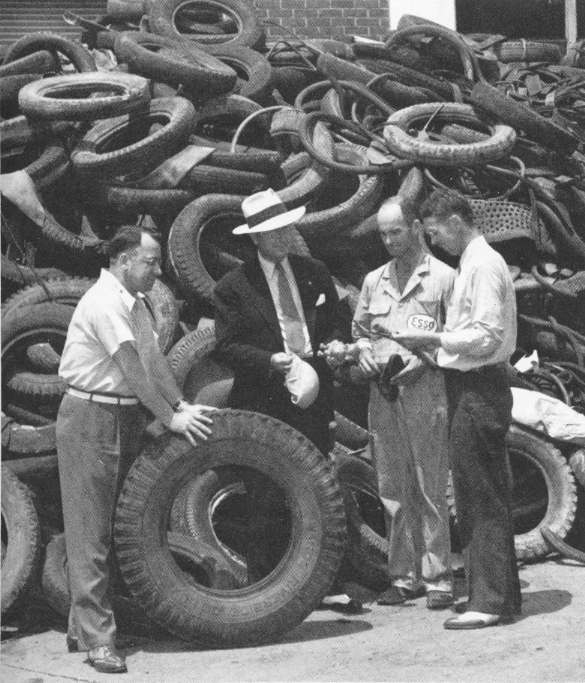
State Department of Archives
and History, Raleigh, N.C.
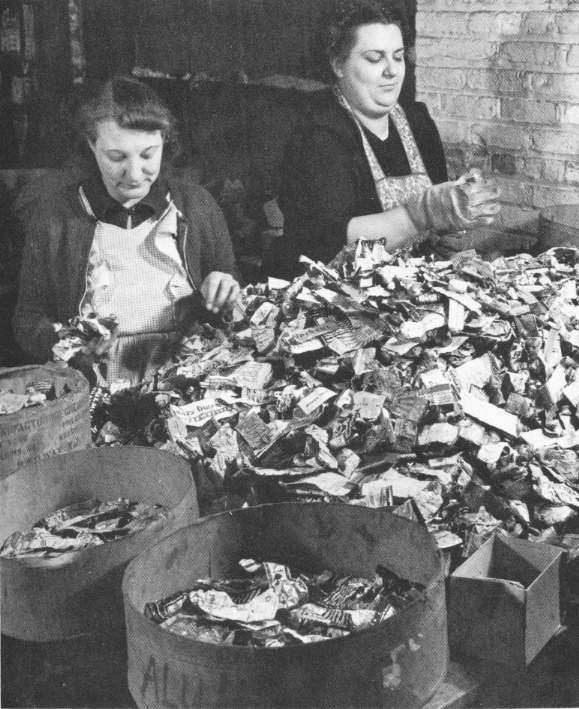
Library of Congress
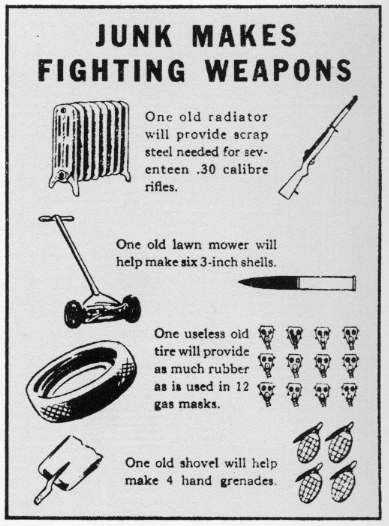
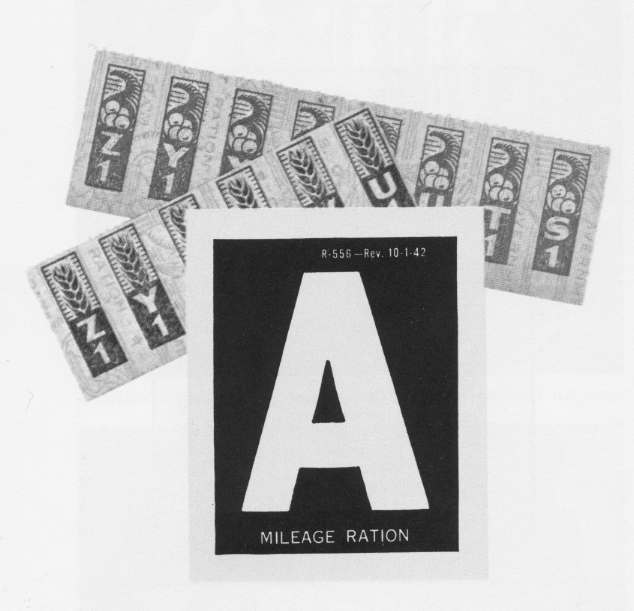
National Archives
208-AA-322I-2
Library of Congress
National Archives
208-AA-322H-1
>OCCASIONALLY
THE WAR COMES ALL THE WAY UP TO OUR DOORSTEP |
United
States Army Air Force
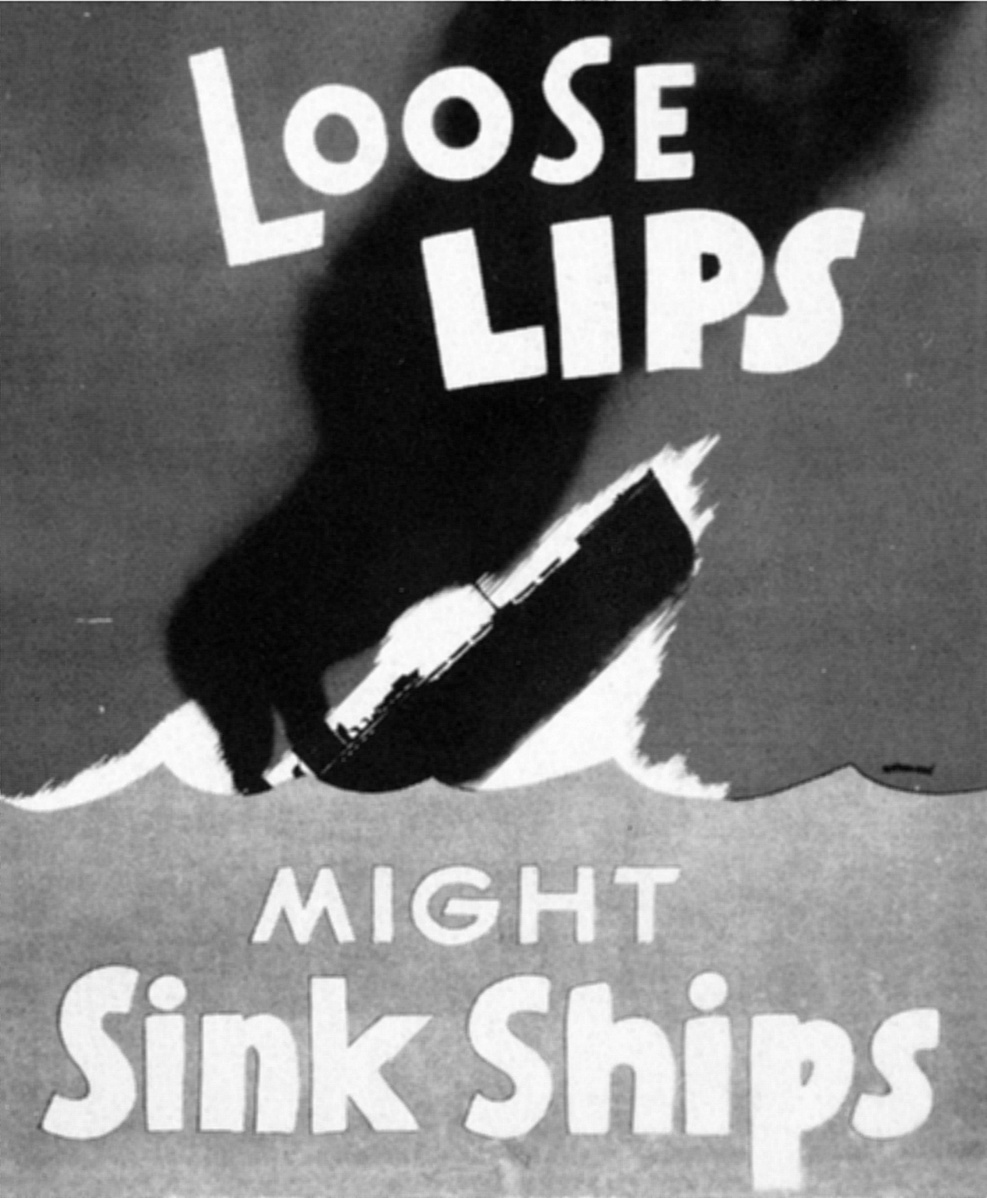
AMERICA
REACTS IN RESPONSE TO FEARS OF A JAPANESE "FIFTH COLUMN" WITHIN AMERICA |
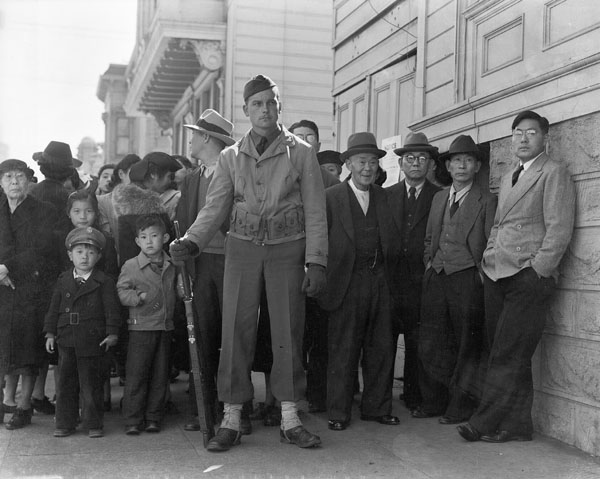
By Dorothea Lange, San Francisco,
California, April 1942
National Archives
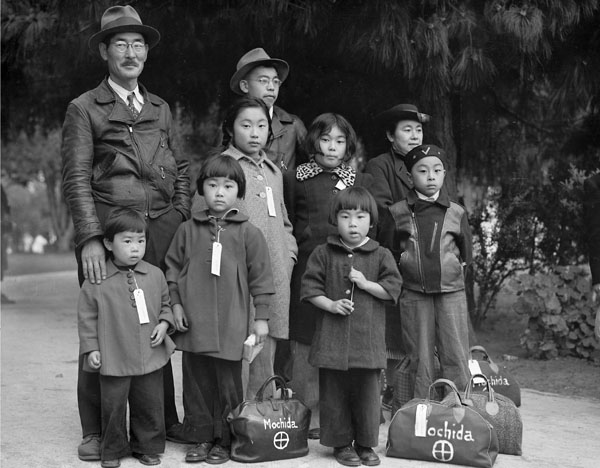
By Dorothea
Lange, Hayward,
California, May 8, 1942
National Archives
In 1942 Executive Order 9066
ordered the removal of 110,000 civilians of Japanese descent, including 71,000
American citizens, from the western United States,
placing them in internment camps.

Go on to the next section: Inside Hitler's Reich

Go on to the next section: Inside Hitler's Reich


